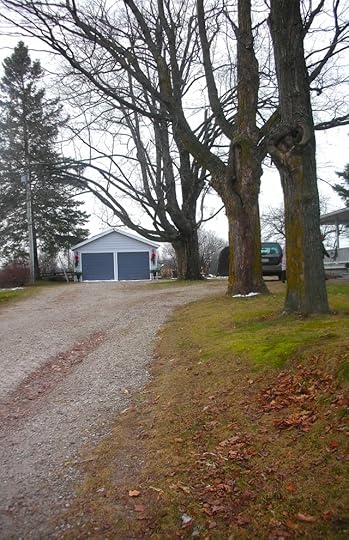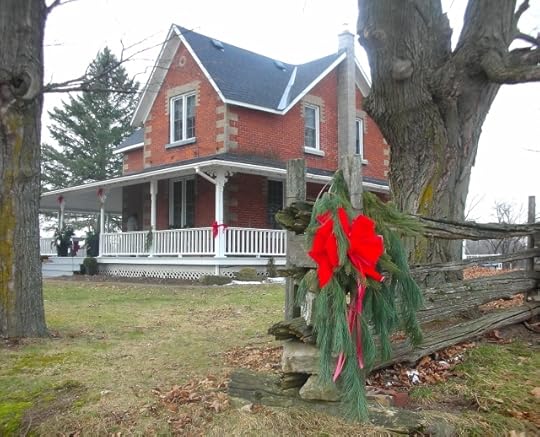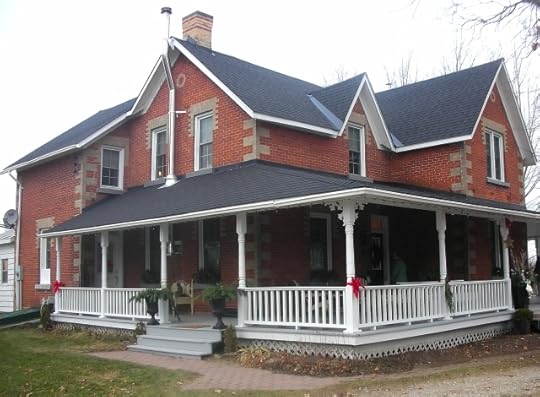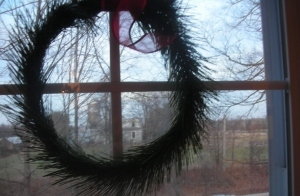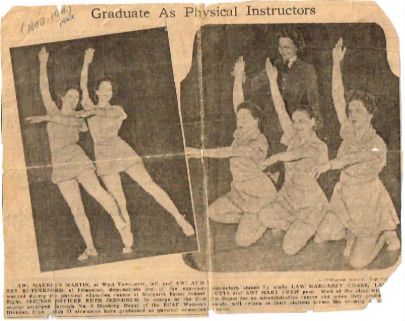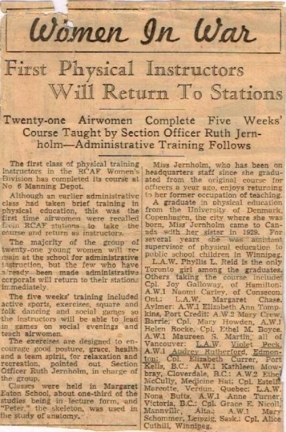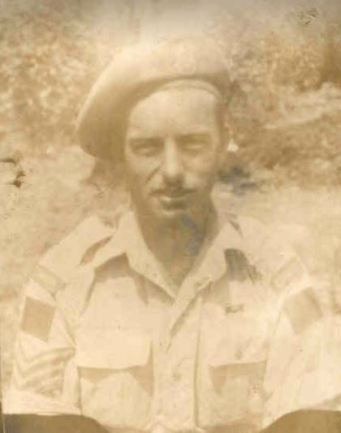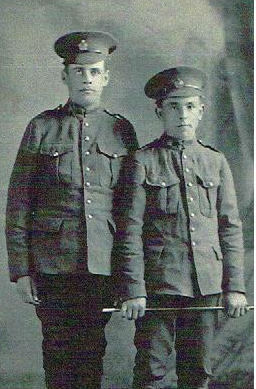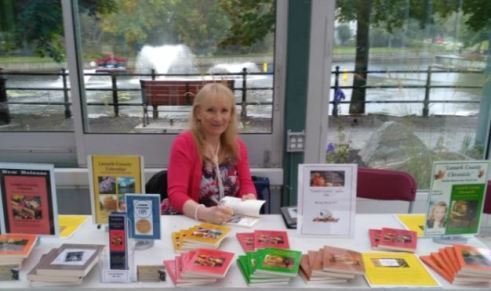Arlene Stafford-Wilson's Blog, page 14
December 11, 2023
Homecoming: Stafford House
For some people it’s the music of the season, the smell of the turkey, or the glittering gifts sitting under the tree; but for me it was a special visit to the house where I grew up, a homecoming, after a long absence of twenty-two years.
It doesn’t really seem that long ago since our father passed away in 1992, and our mother moved to Perth. I almost half expected to see him coming from the garage, carrying a tangled mess of Christmas lights, asking me if I’d hold the ladder steady, while he fastened the wire clamps onto the big spruce tree at the front of the house.
When I first heard from Wendy Parker, the current owner of our former home, that it was to be part of a Christmas House Tour, my thoughts turned back to days gone by, of the heavenly smells of Mother’s baking, bright cards in the mailbox at the end of the lane, and special concerts and plays at Calvin Church. There would be eight houses in total on the Christmas House Tour, and the event was sponsored by the Canadian Federation of University Women, and the money raised would help support education in the community.
Christie LakeKevin and I arrived early that afternoon, with ample time to visit some of my old, familiar haunts. We drove first to Christie Lake, a place I knew well, the bridge at Jordan’s, where I’d jumped many times into the cool, clear waters. Hot days spent riding bikes with friends on the Third Line, and when that bridge was finally in sight it was like seeing an oasis in the middle of the desert. What a welcome sight it was! And even on this cold, December day, the lake appeared as serene and as lovely as it always did, calm and blue, waiting patiently for cottage season, and the laughter of little ones, the parties and music of the older ones, and a place of peace and serenity for the eldest ones. We drove along the shore, and then headed back up the Third Line.
The bridge at Jordan’s Cottages – at Christie Lake – a place where we often swam as children, on hot summer days, jumping off the bridge into the cool, clear water.Calvin ChurchA visit home would not be complete without making a stop at the church where our Mother brought us every Sunday. This was where we celebrated baptisms, witnessed weddings, and met for comfort after funerals. This was the setting for the Strawberry Socials, Easter Sunday white gloves and hats, the lighting of the advent candles and Christmas Eve. The church stands proudly on Cameron Side Road, looking solid as ever, a place for meeting neighbours, friends, a place for worship, a place for solitude, and a shelter from the storms and turmoil of the outside world.
Calvin United Church, Cameron Side Road, Tay Valley Township, Lanark County, OntarioRailroad TracksWe headed back to the Fourth Line and rounded the curve, up to the railroad tracks. There were many strolls along these tracks to the duck pond, watching the beavers at play, seeing the ducks return year after year, raise their babies, and leave at the end of the season. Memories of sitting under the big tree along the tracks with my brother Roger, as we patiently placed a penny each on the rails, sat back, waited for the train to go by, then retrieved our flattened pennies. Many hours in my youth were spent waiting for trains, listening to the sounds of the lonely whistles, and hearing the rumbling and chugging down the tracks as they headed for Perth.
Railroad crossing, on Perkins’ Road, near the 4th Line, Bathurst (Tay Valley Township), Lanark CountyA view from the railroad tracks, near the 4th line, Bathurst Township (Tay Valley Township)The gentle slope, under the tree, near the railroad tracks, where Arlene Stafford and her brother, Roger Stafford, often sat on the hot summer days, placing a penny or two on the tracks, and waiting for the trains to go by, and then retrieving the flattened pennies.The CreekWe continued up the side road to the little creek and as soon as I spotted it, I remembered scooping up the tadpoles in my sand pail, and then pouring them into a big glass pickle jar to set on the window ledge in my bedroom. Every spring it was a ritual to catch some of these quick, black tadpoles, or pollywogs, as we called them, and watch them for hours, swimming contentedly in the jar, until we dumped them back into the creek.
The little creek, on Perkin’s road, not far from the Stafford House, where the Stafford children collected tadpoles in jars, on warm spring afternoons.The lowlands, behind the Stafford House, where all the Stafford children learned how to skateThe LowlandsThe lowlands, across from the creek were still flooded, and ice was already beginning to form. It was back on these lowlands that we all learned how to skate; not on a flat, pristine ice surface in an arena, but through the weeds, and over the bumps, and up and down the imperfections of a farmer’s field. The fact that our skates were old hand-me-downs was the least of our worries!
We drove up the side road to the laneway and parked the car. As we walked up the lane, the slopes and curves of the land were as familiar to me as if I’d never left, and we made our way to the door and knocked.
Kevin Wilson, at the base of the laneway, leading up to the Stafford HouseHeritage PerthChristmas House Tour
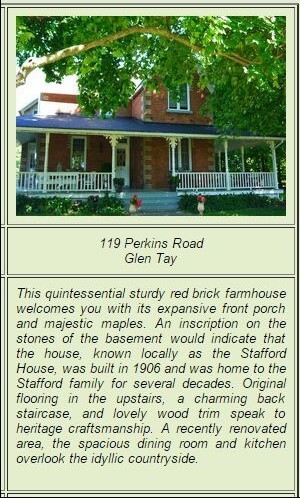
When the door opened and we stepped inside, the home was beautifully decorated for the season. Wendy’s elaborate table was laid out with her mother’s china and cutlery with festive accents fit for a holiday gathering. The whole house in fact, was lovely and bright, adorned with reds and greens and touches of gold and shimmer. As we walked through the rooms, one by one, they were warm and inviting, and almost made me forget that something was missing – the smell of fresh baked bread, a permanent aroma in our house as Mother baked daily for a family of seven.
Photo AlbumThere was a lovely display arranged on a table in the den, an album of our Stafford family photos and copies of ‘Lanark County Kid’ and ‘Lanark County Chronicles’. I thought that they looked very much at home in this well cared-for house, so lovingly maintained and obviously cherished.
A view to the east, with the former home of Chris and Leanore Perkins framed in the wreathMargery Conboy, (front), with Wendy Parker, viewing photos of the Stafford family when they lived in the houseA view to the west, at sundownNeighboursPerhaps what made the house seem so much like home, after so many years away, were the familiar faces, friends and neighbours, who came to share the memories, of the things that once were; and to celebrate a new Christmas season, content and happy in each other’s company. Though Wendy’s is the newest face among us, it’s as if she’d been with us all along. Wendy is a gracious hostess, and we all had a wonderful time chatting about the house, and catching up on the news in the neighbourhood. We discovered a few years ago through Ancestry DNA that Wendy is a cousin, through the Irish McGarry family who settled in Drummond Township in 1816.
MemoriesI walked through the house, room by room, and the memories of the past lurked playfully around every corner. The house seemed to remember me, and the walls and ceilings surrounded me with love, and kept me warm and safe once again. It was a special day, and a rare treat to be back home.
………….
Thank-you!Heartfelt thanks to Wendy and to the members of the Canadian Federation of University Women, for making our visit possible, and many thanks also to old friends and neighbours Margery Conboy, Beverly Ferlatte, (the late) Betty Miller, Eleanor Paul and her lovely daughter Heather, for joining us on our trip down memory lane!
The AfterglowAs I continue to bask in the glow of our visit to the old house, I will leave you with this quote from Thomas Wolfe:
“But why had he always felt so strongly the magnetic pull of home, why had he thought so much about it and remembered it with such blazing accuracy, if it did not matter, and if this little town, and the immortal hills around it, was not the only home he had on earth? He did not know. All that he knew was that the years flow by like water, and that one day we come home again.”
……..
In MemoryThis story – in memory of Betty Miller (1934-2015) – “gone, but not forgotten”
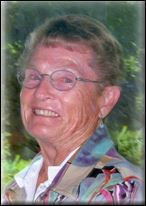
……..
(Heritage Perth Christmas House Tour 2014)
Arlene Stafford-Wilson
Honorary Life Member, Lanark County Genealogical SocietyMember, Association of Professional GenealogistsLanark County Pioneer Families Humanitarian Award 2023Author of : “Lanark County Christmas”, “Lanark County Comfort”, “Lanark County Collection”, “Lanark County Calling”, “Lanark County Classics”, “Lanark County Connections”, “Lanark County Calendar”, “Lanark County Chronicle”, “Lanark County Kid”, & “Recipes & Recollections”…and “Lanark County Kitchen: A Maple Legacy from Tree to Table”November 30, 2023
St. Andrew’s Day – Scottish
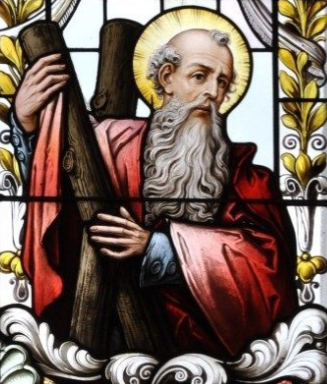
A sizeable number of Canadians are descendants of Scottish settlers. One of the first groups to come to Lanark County in large numbers were known as the Lanark Society Settlers, and many of them and their descendants established mills, lumber businesses, schools, churches, and built some of the impressive limestone structures still seen today. Many of these pioneers passed down their traditions, and one of them is the marking of St. Andrew’s Day.
Celebrated on November 30th, St. Andrew’s Day is also known as Andrew’s Feast Day or Andermas. St. Andrew’s Day marks the beginning of the Advent season, leading up to Christmas. St. Andrew is the official saint of Scotland, and so, on that day, traditional Scottish foods are enjoyed, and Scottish culture is celebrated.
In Scotland, St. Andrew’s Day also marks the first of three winter celebrations – St. Andrew’s Day on November 30th, followed by Hogmanay (New Year’s), then the Burns Supper on January 25th, ( the birth of famous Scottish poet Robbie Burns).
Fishermen
St. Andrew is also known as the, “Patron Saint of Fishermen”

Andrew was one of the first of the 12 disciples, another reason he is honoured in Scotland, and around the world. He was the elder brother to Peter, and was officially recognized as the official Saint of Scotland when Scotland’s independence was declared with the signing of the Declaration of Arbroath in 1320.
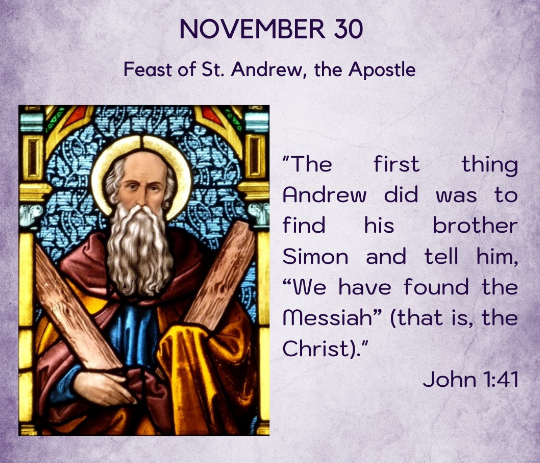
Scotland celebrates St Andrew’s Day every year on November 30th with celebrations of Scottish culture, including highland dancing, traditional music, food, and drink, with parties going on long into the cold winter night.
One of the staples in a St. Andrew’s Day feast is a bowl of Scotch Broth, a long-standing tradition among the Scottish people.
Scotch Broth

Ingredients
1 lb ground lamb
1 Tbsp butter
2 medium onions, chopped
4 carrots, sliced 3/4-inch thick
1 turnip, 1-inch dice
6 cups beef broth
2 cups water
2 cups cooked pearl barley
Method
Brown the lamb in a stockpot.
Add 1 Tbsp of butter, onions, carrots, turnip. Cook vegetables until softened; 5-8 minutes.
Add the broth, water, cooked barley. Cover and simmer until the vegetables and barley are tender, about 10 minutes. Add the lamb and, simmer, uncovered, for about 5 minutes to allow flavours to blend.
Scottish Stovies

Stovies are a quick and easy dish, a well-known comfort food all across Scotland, and a popular meal for the feast of St. Andrew.
Ingredients
1 Tbsp butter
2 medium onions diced
4 tablespoons dark beer, or stout, (if desired)
4 ounces cold roast beef, diced
1 1/2 lbs potatoes, peeled and quartered
Salt, if desired
Pepper, to taste
1 1/4 cups beef stock, or leftover gravy
Diced carrots
Diced turnips
Method
May be made in a roasting pan, Dutch oven, or large soup pot
Brown the onions in the butter
Add the beer or stout
Add the beef and stir well
Add the potatoes in layers with the carrots and turnips alternating
Add the beef stock
Cook until vegetables are tender
Stovies will keep for several days refrigerated
St. Andrew’s Scones

Ingredients
1/3 c. butter
1 3/4 c. flour
3 Tbsp. sugar
2 1/2 tsp. baking powder
1/4 tsp. salt
1 egg, beaten
1/2 c. currants or raisins, optional
4 to 6 Tbsp. half and half or milk
1 egg, beaten
Method
Preheat oven – 400 degrees
Cut butter into flour, sugar, baking powder, and salt until mixture resembles fine crumbs
Stir in 1 egg, currants and enough half and half so dough leaves the sides of the bowl
Turn dough onto lightly floured surface; knead 8 times
Roll 1/2 inch thick; cut with cookie cutter or glass
Place on ungreased cookie sheet
Brush with beaten eggs and sprinkle with sugar
Bake until golden brown, 10 – 12 minutes remove immediately
Serve with butter, jams and jellies
St. Andrew’s Celebrations
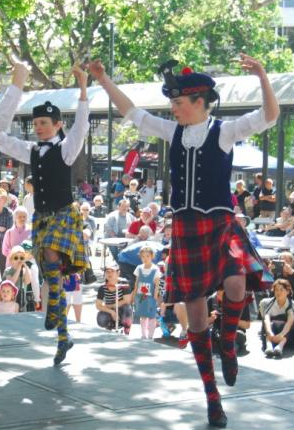
All across Scotland on November 30th, there will be celebrations, live music, and street parties, drinking and feasting into the wee hours.
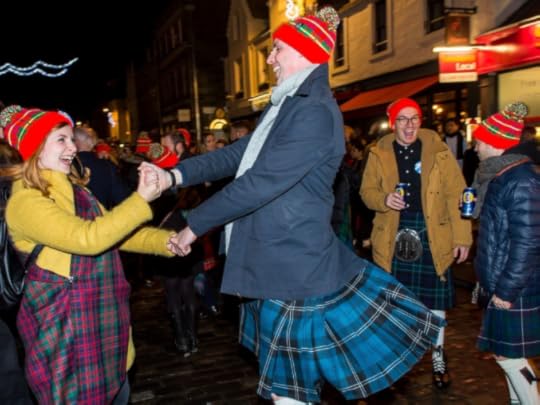
Are you Scottish?
Maybe your Lanark County ancestors came from Scotland, and you’ve always celebrated St. Andrew’s Day, or if you want to begin to mark your Scottish heritage by honouring this special day, then try some traditional food and drink, and celebrate your own way.
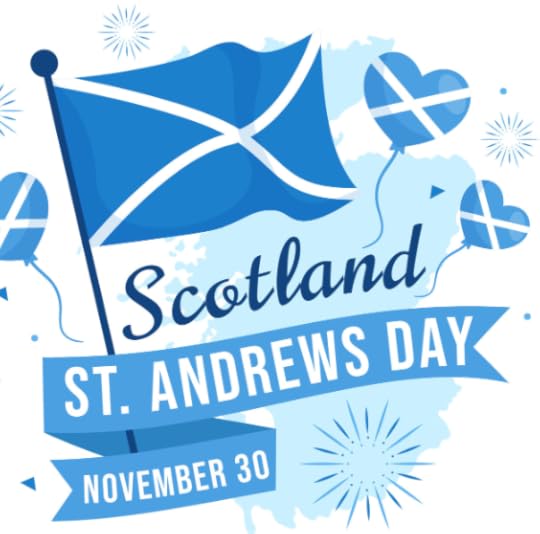

St. Andrew, Patron Saint of Scotland
So, let’s raise our glasses to St. Andrew, and celebrate this special Scottish holiday.

Whatever way you choose to mark St. Andrew’s Day – have a wonderful day!
Happy St. Andrew’s Day!
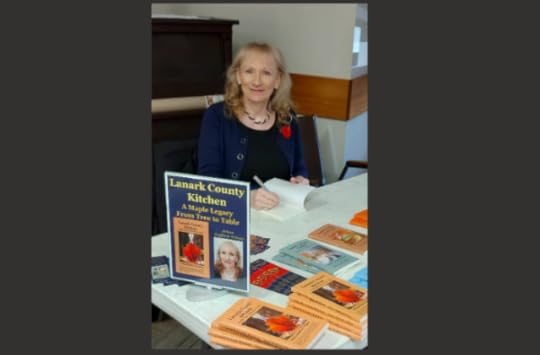
Arlene Stafford-Wilson
Honorary Life Member, Lanark County Genealogical Society
Member, Association of Professional Genealogists
Lanark County Pioneer Families Humanitarian Award 2023
Author of : “Lanark County Kitchen”, “Lanark County Christmas”, “Lanark County Comfort”, “Lanark County Collection”, “Lanark County Calling”, “Lanark County Classics”, “Lanark County Connections”, “Lanark County Calendar”, “Lanark County Chronicle”, “Lanark County Kid”, & “Recipes & Recollections”
November 29, 2023
Nevis Cottage
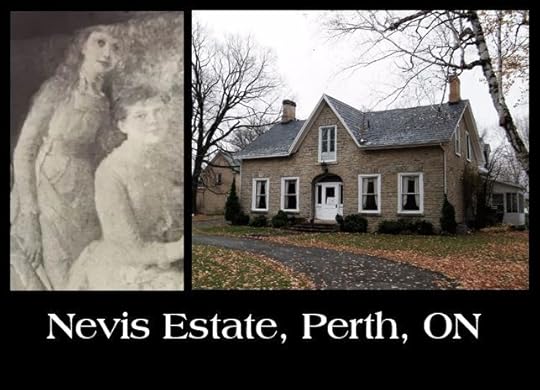
Nevis Cottage
I remember sitting in the back seat of the family car, going over the bumpy railroad tracks on Drummond Street, and asking Dad about the beautiful house, set back far from the road, in the beautiful garden setting. He said the home was called Nevis Cottage, named for the tallest mountain in Scotland, Ben Nevis. It seemed like an odd name for the place, and being a young child I couldn’t grasp why such a large property would be called a ‘cottage’, or why it wasn’t situated along the shores of a lake, like all of the other cottages I knew.
Peter McLaren
The home was built in 1840 by a respected Anglican minister, Reverend Michael Harris, who sold it to a prominent lawyer, Crown Attorney Donald Fraser. Perhaps the most well-known owners of this beautiful property were lumber baron, Peter McLaren, his wife, Sophia, and their children. The McLaren family purchased the property in 1870, along with an additional 400 acres of land beside the property.
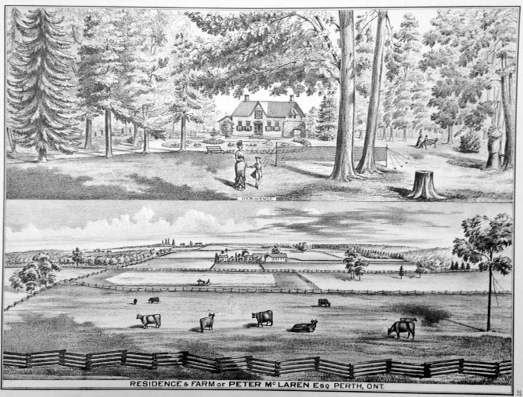
McLaren property, as it appeared in days gone by
Peter McLaren, son of James and Margaret Headrick McLaren, married, on November 22, 1867, at the age of 39, to the lovely Sophia Lees, age 22, daughter of William Lees and Mary Playfair.
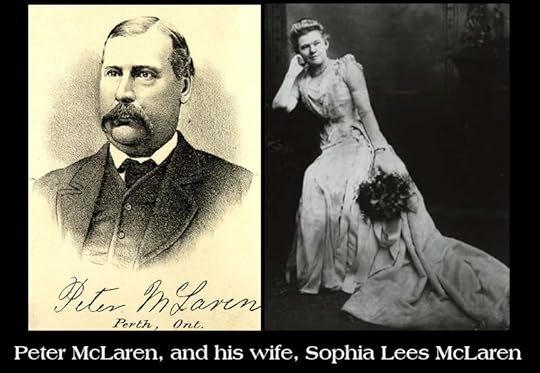
Peter McLaren doubled the size of the original dwelling to 7,700 square feet, extending the back of the original stone house. A large kitchen was added on the main floor, and several additional bedrooms, as well as servants’ quarters were added on the second floor. He also added a 4,700 square foot carriage house in 1880.

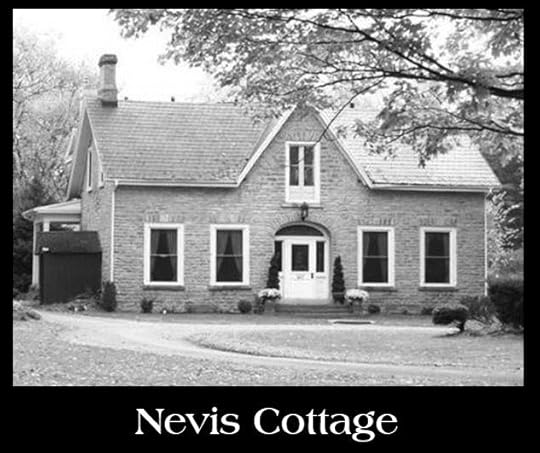
The five McLaren children:
Margaret Elsie McLaren Hall – 1869-1954
Married: November 18, 1903, to F. William Hall, M.P.P. for South Lanark, Barrister of Smiths Falls and oldest son of Francis Alexander Hall, and Harriett Frances Dunham Hall, of Perth. They lived for a while in the Perth area, and later moved to Oshawa. They had no children. Margaret died at age 85, in Oshawa.
Mary Isobel McLaren Benedict – 1874-1927
Married: at age 23, at St. James Anglican Church, Perth, June 22, 1897, to Charles Benedict, they moved to Toronto, where Charles worked at the Bank of Montreal. They had three children: Charles, born in 1900 and died as an infant, Doris Sophia, born in 1902, and Peter McLaren Benedict, born in 1907. Mary died at age 53 in Toronto.
Annie ‘Kathleen’ McLaren – 1875-1954
Kathleen chose to remain single, did not have any children, and was the last of the family members to reside at Nevis Cottage. When Kathleen passed away in 1954, age 79, she died without heirs. The McLaren estate, consisting of the grand house, the 600 surrounding acres, and all of the valuable artwork, jewelry, and fine furnishings, required the distinguished auction house of Ward-Price from Toronto, to appraise the family’s vast collection. Because she left no heirs, the estate of Kathleen McLaren caused a great deal of in-fighting, with claims to the estate and litigation that went on for many years after her death.
James Lyon Playfair McLaren 1878-1934
At age 27, James married Isabel Frances Geddes on February 14, 1906 at St. George’s church, Ottawa. Isabel was the daughter of Charles Geddes and Selina Sweetland. They had two children: Peter McLaren, born 1907, and Selina Sophia ‘Ena’ McLaren, born 1909. They moved to Springfield, New Hampshire. James passed away at the age of 57 at Springfield. The funeral was held at Nevis Cottage.
William Lees McLaren – 1880-1932
On October 14, 1910, at age 30, William ‘Willie’ McLaren married Anna Gemmill at her parents’ cottage on the Rideau Lakes. Her parents were Lawrence Gemmill and Elizabeth Kellock Gemmill. As a wedding gift, Senator (Peter) McLaren gave Willie and Anna a mining property on Otty Lake, known as Forest Lodge. They lived there and ran the mine. Willie passed away after an illness, at the Montreal hospital, at the age of 53. The funeral was held at Nevis Cottage. Willie and Anna had no children.
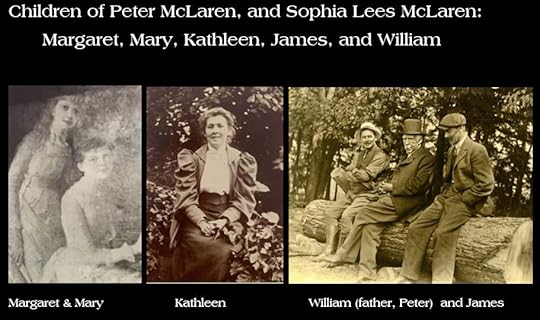
“William and James, were sent to a private boarding school
in Edinburgh, Scotland.”
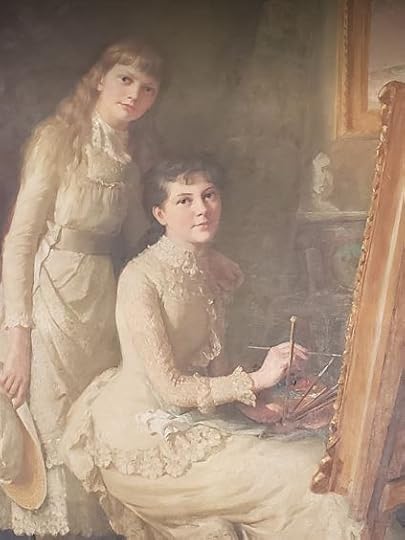
Peter McLaren commissioned artist John Wycliffe Lowes Forster (1850-1938) to paint his daughters, Margaret and Mary. The painting is currently housed at the Perth Museum. (Forster’s paintings are among those in the permanent collections of the National Gallery of Canada in Ottawa. Some of his memorable works include portraits of Sir Wilfred Laurier, Timothy Eaton, and Sir Sanford Fleming.)
1977 House Tour
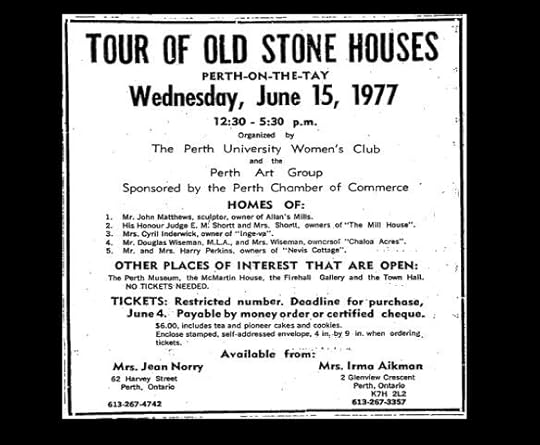
May 26, 1977, p. 12, “The Perth Courier”
In 1977, the Perth University Women’s Club organized a tour of Old Stone Houses, which included Nevis Cottage. At that time the property was owned by Mr. and Mrs. Harry Perkins.
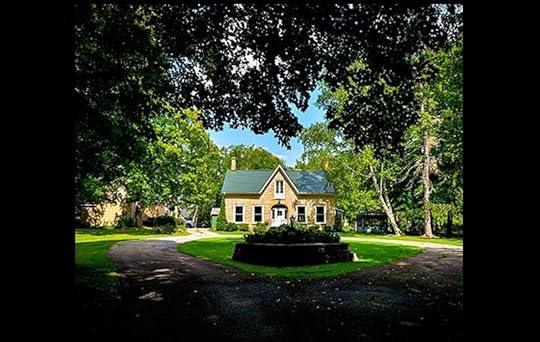
Modern view of Nevis Estate
Today, Nevis Estate is a bed and breakfast, located at 61 Drummond St. W., in Perth, Ontario.
In 2018, this video of Nevis Estate was featured on YouTube, and gives the viewer a glimpse at the lovely interior of the home, with all of its many entertaining spaces, and large, gracious bedrooms.
To view the video:
Although Nevis ‘Cottage’ looks very different today than it did when Senator Peter McLaren and his wife Sophie occupied the house remains a lovely property and will always be one of the notable homes in Perth’s long history.
Many years have passed since I first noticed the home, as I sat in the backseat of Dad’s old Buick, face pressed against the window, in the bumpy ride over the train tracks on Drummond St. I still love to hear the stories of the old days when the McLaren family lived there. In my mind I imagine the children – Margaret, Mary, Kathleen, James and Willie, running across the wide lawns, laughing and playing in their enormous yard. I can picture smartly-dressed servants carrying cool glasses of lemonade and biscuits to Mrs. McLaren and her friends, as she entertains them on the back lawn.
As the pink sun sinks low in the sky and the day draws to a close at Nevis Cottage, we can picture Senator Peter McLaren arriving home after a long day overseeing his lumber business. He hands his cane and hat to the house maid as he enters, and greets Sophia and the children warmly, as they prepare to sit down to a sumptuous meal, in their elegant home. Another perfect evening at Nevis Cottage.

Notes:
(In 1983, a magazine called,”Canada Century Homes”, featured Nevis Cottage, as well as The Crain House, The Mill House, Inge-Va, and Matheson House)
(photo of the painting of the McLaren girls, courtesy of the Perth Museum)
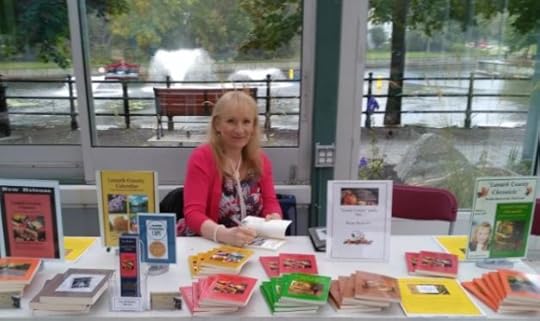
Arlene Stafford-Wilson
Member, Lanark County Genealogical Society
Member, Association of Professional Genealogists
Lanark County Pioneer Families Humanitarian Award – 2023
Author of 11 books: “Lanark County Christmas”, “Lanark County Comfort”, “Lanark County Collection”, “Lanark County Calling”, “Lanark County Classics”, “Lanark County Connections”, “Lanark County Calendar”, “Lanark County Chronicle”, “Lanark County Kid”, & “Recipes & Recollections”
and “Lanark County Kitchen: A Maple Legacy from Tree to Table”
November 21, 2023
White Church, Drummond Township
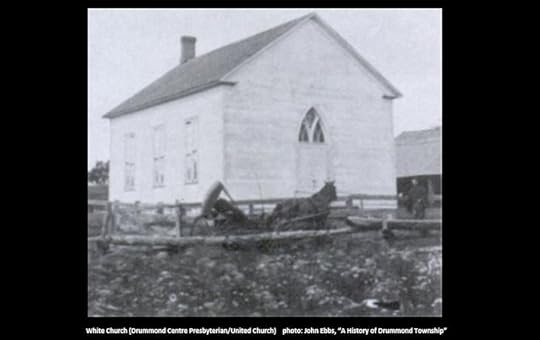
Drummond Centre Church
(also known as White Church)
With transportation being so quick and easy in the modern world it’s difficult for us to imagine that the early pioneer settlers often had to walk from place to place, as not everyone was fortunate enough to own a horse and buggy. They walked to obtain dry goods for cooking and baking, they walked from farm to farm for social events, birthday celebrations, and to visit with neighbours. They also walked to the closest church so they could carry on with the religious practices and beliefs that they brought with them from the old country.
There was a growing group of mostly Scottish, mostly Presbyterian pioneers who had settled in the Drummond Centre area, and in the early days, many of this hardy lot had to walk to Perth to attend church at Knox Presbyterian Church. While walking to Perth was not as much of a difficulty for the younger and healthier members of the community, it was not the case for the elderly, or those who were in the later stages of expecting a child, or for anyone for whatever reason was not physically capable of walking that far. Some of the more prosperous farmers went to Perth on horseback, and a smaller number, more affluent, used horse and buggy, or horse and cutter in the winter.
Duncan McLaren
Duncan McLaren, a respected member of the Presbyterian community, and an Elder at Knox Church, in Perth, was chosen by members of the congregation from Drummond Centre, to visit the Presbytery in Brockville. They were the body responsible for administering the churches in their region. His request was for permission for the people in Drummond Centre to be able to establish a branch of the Presbyterian Church right in their own community.
First Service in 1881
While two mission ‘fields’ were granted in 1877, one at Balderson, and one at Drummond Centre, it was not until 1881 that the new Drummond Centre Presbyterian Church was built and opened. The church was built on the East half of Lot 17, on Concession 8, of Drummond Township. James Stewart sold a quarter acre of land to the church for the sum of one dollar. The deed was signed by Adam Armstrong, James Shaw, and Henry McDonald.
Anniversary Services were held in the fall of 1920:
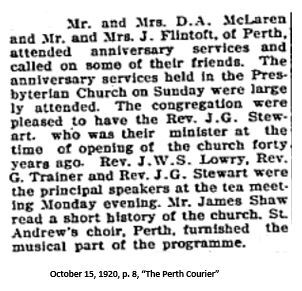
Drummond Centre
United Church
In 1925, with the amalgamation of some of the Presbyterian, Methodist, and United Churches, the Drummond Centre Presbyterian Church became part of the United Church of Canada.
50th Anniversary
On October 26th, 1931, Drummond Centre United Church celebrated their 50th anniversary. An article from “The Perth Courier” provides details of the event, and gives the reader an insight into those times, so long ago:

(transcribed from “The Perth Courier”, October 30, 1931, p. 1)
“This important and most unique event in connection with the Drummond Centre United Church was solemnized and duly celebrated upon Sabbath, October 26th, 1931. Special anniversary services were held morning and evening, the speaker for the day being the minister of the church, rev. Thomas McNaught, B.D., of Balderson. The church was filled to an overflowing capacity at both services, as many former members were present and friends from neighboring communities. Beautiful fall weather prevailed.
“The church was filled to an overflowing capacity at both services, as many former members were present and friends from neighboring communities. Beautiful fall weather prevailed.”
In the morning the service of Praise was in charge of members from St. Andrew’s Presbyterian Church choir, Perth, consisting of aquartetto, Messrs. Dodds, Steele, Howie, and Kerr. Mrs. Kerr presided at the organ. They were assisted by members from the Balderson and Prestonvale choir. Mr. Fred Steele sang a most appropriate solo, ‘Building for Eternity’ which was listened to not only with a sense of joy but of spiritual profit. Then the quartette rendered in a most soul stirring manner that beautiful piece entitled, ‘Jesus, Savior, Pilot Me’. Rev. Mr. McNaught spoke from the text found in 1st Cor. 4:18 and in the words of this text and throughout his sermon he sought not only to show the vast different between the temperal and the spiritual – the transient and the eternal but urged upon his hearers to build upon the eternal verities of the Eternal God and His eternal truth and not to forget the spiritual welfare of their inner and higher life that man cannot live by bread alone but by every word that proceeded out of the mouth of God.
“Mrs. Kerr presided at the organ. They were assisted by members from the Balderson and Prestonvale choirs.”
At the close of the service Mr. McNaught in a few well chosen words thanked the friends from Perth who had taken charge of the service of praise and who had brought such inspiring and helpful messages through the medium of service song. He also expressed the congregation’s thanks to the members of the Balderson and Prestonvale choirs who had assisted.
In the evening a still larger congregation was present. The service of Praise was in charge of the Prestonvale choir. This fine choir was out in full strength and was greatly helped by friends from Perth.
This splended choir led the congregation in its singing a solo, ‘When I Survey the Wondrous Cross’, sung by Mr. Rodney. All listened to it with deep appreciation and a feeling that it brought a wonderful message to all the worshippers assembled. Then a quartette was rendered by Messrs. Reid, McLaren, Rodney and Couch, the selection being, ‘Rock of Ages’, and later the entire choir sang an anthem conveying the old Gospel message in sacred song. At the close of the evening service Mr. McNaughton thanked the Prestonvale choir and organist and the friends from Perth who had assisted them in the name of the congregation assuring them of their sincere thanks and appreciation.
“Before closing the evening service he asked all present to stand who were present fifty years ago at the opening and dedication of the church. Only seven were present who witnessed the opening and dedication of the church.”
Mr. McNaught’s message was entitled, “The Call of Christ”, basing his sermon upon Christ’s words, ‘Follow Me’, recorded in St. Matthew 4:19. His message was a call for all to hear Christ’s call for Christian service and to surrender their all to Him. Before closing the evening service he asked all present to stand who were present fifty years ago at the opening and dedication of the church. Only seven were present who witnessed the opening and dedication of the church.”
“On Monday evening a social time was spent together in the Orange Hall.”
(the L.O.L. # 7 Orange Lodge, one of the earliest established in the country, was located near the church)
“On Monday evening a social time was spent together in the Orange Hall, the hall being put at the disposal of the Church by the local Orangemen for the evening gratuitously which was greatly appreciated by the congregation. There was a large turnout and a fine mixed program was gone through and listened to with much enjoyment and also profit. Some young people from Carleton Place put on very effectively a pantomime entitled, ‘The Lamp Went Out’. Miss Anderson sang beautifully a solo while Miss Brunton of Balderson was the elocutionist of the evening and was heard several times through the evening with great delight to all.
The school children of Drummond Centre under the leadership of Mr. Devy of Perth, put on several numbers which were greatly enjoyed. Then a beautiful drill was gone through in a faultless manner by the girls of the school under the guidance of their teacher Mrs. Horrocks.
“After this, refreshments were served and an enjoyable social time was spent by all.”
The speeches for the evening were three – Rev. Mr. Livesay, returned missionary from Korea brought a wonderful message telling in vivid language the work of the Church in Korea. He was followed by Rev. Dr. James Semple of Smiths Falls and as chairman of the Renfrew Presbytery brought the Presbytery’s greetings to the congregation upon this the occasion of their golden jubilee. He too brought a wonderful message urging upon the congregation to ever emphasize the essential things of our Christian faith. He referred to the very fine friendship existing between him and their pastor, Mr. McNaught – that not only were they college chums but had graduated the same year. Inspector T.C. Smith, M.A. was also heard in a short address of congratulations to minister and people and a few words of Christian counsel. Mr. McNaught was chairman and welcomed all present. The first part of the evening was brought to a close by the chairman thanking all in the name of the congregation who had assisted in the program and by the entire audience rising and singing the National Anthem. After this, refreshments were served and an enjoyable social time was spent by all.
Church History
Some details of the rich history of the church were also provided in the article from, “The Perth Courier”, dated October 30, 1931:
“A brief history of this congregation might be interesting. Drummond Centre community was largely settled by pioneers from Scotland over 100 years ago – their spiritual interests were not forgotten and they realized the need of God in their lives. The following extract was read and prepared by the late Mr. James Shaw at the 40th Anniversary and taken from a local paper, October 14th, 1920:
“In the pioneer days in Drummond Township many of the earlier settlers had to drive a considerable distance to Knox Church, Perth. As many of these settlers had come from Scotland, a land where the ordinances of divine grace were faithfully attended, the people felt they must have in their own community some visible sign of Jehovah’s presence. To this end Mr. Duncan McLaren, an elder of Knox Church, Perth, was chosen to appeal to the Brockville Presbytery for permission to form a congregation. After some discussion Presbytery granted the request and steps were taken to form a congregation in connection with Balderson, an outshot from St. Andrew’s, Perth.
“As many of these settlers had come from Scotland, a land where the ordinances of divine grace were faithfully attended…”
In 1877, mission fields were formed in the congregations with Mr. J.K. Baillie as the first missionary, who remained among us for two summers. Mr. Baillie was followed by Mr. John Geddes, who labored for a year and a half, after which he returned to Scotland.
The two missions were established as one congregation in the summer of 1880 and called Rev. J.G. Stuart as minister, who was inducted into the charge in October, 1880. His salary was $400 supplemented by $200 from the Mission Board. During his ministry of over nine years he endeared himself to the congregation especially in the Sabbath School and among the young. In December 1889, he resigned, being called to St. Mark’s Church, Toronto.
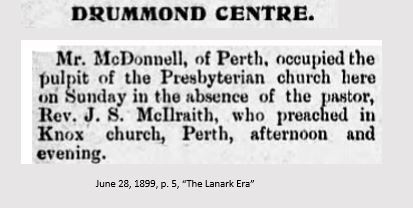
Then a few months afterwards a call was extended to Rev. J.S. McIlraith, of Montreal College and in the spring of 1890 he was inducted. He labored amongst us for almost twenty-one years doing faithful work especially visiting the sick and the aged. He resigned in the summer of 1911 and was followed by Rev. J.G. Greig.
Rev. J.G. Greig was inducted in the autumn of 1911 and ministered to us almost eight years. He too gave us faithful and practical sermons which if we lived out in our daily lives would make us more Christlike in character. In the autumn of 1919 Mr. Greig accepted a call to Valleyfield, Quebec. At the close of his ministry the missionary givings amounted to $1,722.00 and the minister’s stipend to $1,400.00, there having been a gradual increase in the givings from the congregation to the present date. After being several months without a settled minister a call was extended to Rev. G.C. Treanor and accepted trusting that the ministry will be as successful as those who preceded him.
“He too gave us faithful and practical sermons which if we lived out in our daily lives would make us more Christlike in character.”
In the fall of 1922 Mr. Treanor resigned, having accepted a call to Arthur and Goodville in the Saugeen Presbytery.
In March, 1923, a unanimous call was given to Rev. R.A. McRae, B.A., a recent graduate of the Montreal Presbyterian College. He was ordained and inducted in the Balderson Church in March 1923. He did faithful and conscientious work, and resigned in 1927, and is now laboring at Minden, Ontario. During his pastorate the charge passed into the United Church.
In 1925, the Drummond Centre Presbyterian Church became part of the United Church of Canada, and so, was re-named, the Drummond Centre United Church.

(The United Church of Canada was formed 10 June 1925 by the union of some, but not all, of the Presbyterian Churches in Canada, with the Methodist Church, the Congregational Churches of Canada, and the General Council of Local Union Churches.)
“Rev. C.M. Currie, M.A., B.D., then became pastor having received a call and did faithful work until he resigned in the year 1930 in order that he might pursue a post graduate course in New College, Edinburgh, Scotland, for his Ph.D. degree. Before leaving for Scotland he was married to Miss Edith McTavish, of Balderson. Recently, he has been called and accepted same to be assistant minister of Connorgate Church, Edinburgh, Scotland. In the summer of 1930, Rev. Thomas McNaught, B.D., of White Lake, became pastor pursuant to an unanimous call being extended to him and he was inducted on the evening of July 4th, 1930.
“The organizers of the Church in Drummond were: Duncan McLaren, James Shaw, and James Stewart.”
A few items might be interesting re the Drummond Centre Church. The organizers of the Church in Drummond were Messrs. Duncan McLaren, James Shaw, and James Stewart. Mrs. Stewart deeded the land for the church. Rev. Wm. Burns of Knox Church, Perth, conducted the opening services and preached. The first preacher in the church was the late Mr. Adam Young, followed by the late Mr. John Hillis, who was followed by the late Mrs. Wesley Clarke and he in turn was succeeded by Mr. D.A. McLaren and later by Mr. Wm. McFarlane, now of Prestonvale.
The elders now at Drummond are Messrs. Wm. McLaren, Dan Malloch, J.B. Miller and Wilbert Lewis, and the Managers are Messrs. Homer Shaw, James McLaren and John McNaughton.”
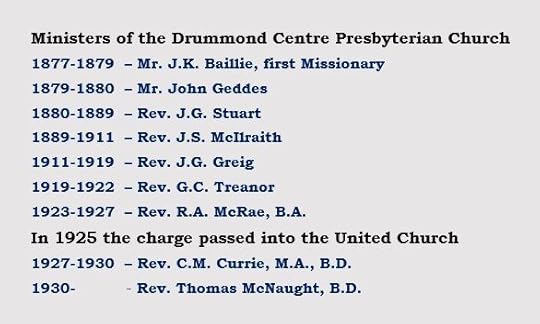
Rev. Thomas McNaught

Minister at Drummond Centre United Church, beginning in 1930
Anniversary Services
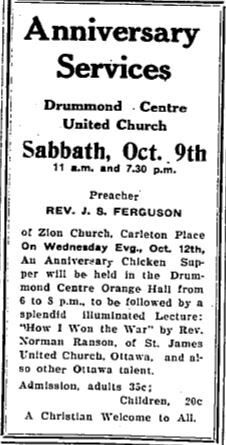
Oct. 7, 1932, p. 5, “The Perth Courier”
Mother’s Day Service
In the spring of 1933, a special Mother’s Day Service was held at Drummond Centre United Church:
“Miss (Mary) Malloch some time ago received a Bible from her pastor for having recited correctly at one sitting the entire 119th Psalm.”
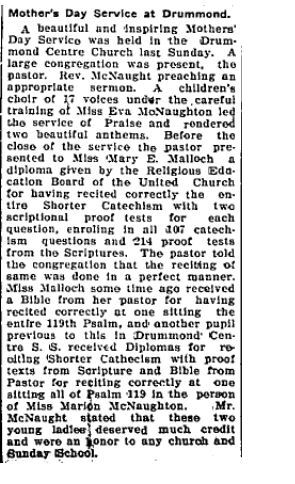
May 19, 1933, p. 1, “The Perth Courier”
Church Closes
The Drummond Centre United Church closed its doors in 1951, and the remaining members of the congregation joined either St. Paul’s United Church, in Perth, Ontario, or the United Church at Boyd’s Settlement.
Church Sold
After the church closed, the building and land was sold to a Mr. Probert, from Carleton Place, Ontario. Mr. Probert owned the property for 21 years, then sold it in 1971 to Clifford Ebbs, who moved the building a short distance south on Gardiner Road to a building lot.
(This is the house directly across Gardner Rd from the E. corner of the Drummond Center Community Cemetery)
The church was sold to Keith Mordy in 1973, and the building was converted to a duplex.
The Cemetery
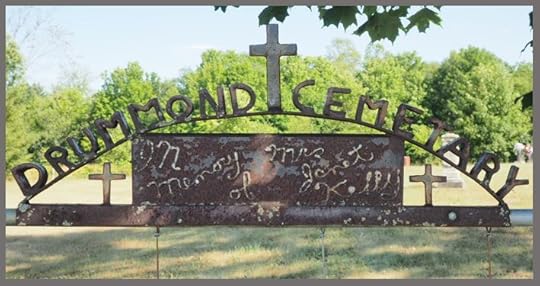
Along with the land donated by James Stewart for the church, James McLaren donated land for a ‘burying ground’, nearby, which is now called the Drummond Centre Community Cemetery.
This cemetery was used as a ‘burying ground’, from as early as the late 1820s or early 1830s. In November 26, 1858, he property was transferred by James and his wife, Christina McLaren, to the Trustees on behalf of the Presbyterian Church of Canada.
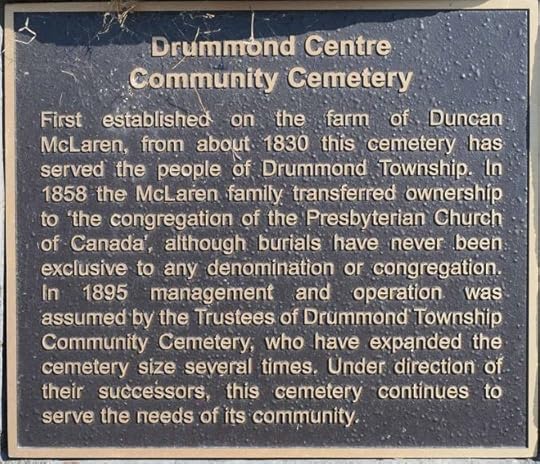
The connection to the Presbyterian Church was severed in May 1895, and it became a “community” cemetery, with the first community trustees being James and his wife, Janet Stewart, John Malloch, and James Shaw.
(Note: descendants of the same families continue to serve as trustees today.)
Surnames in the cemetery:
ALLEN, ARMSTRONG, BARROWMAN, BENEDICT, BEUREGARD, BULLIS, CAMPBELL, CASWELL, CLARK, COOKE, CUNNINGHAM, DEVLIN, FERGUSON, FLINTOFF, FLINTOFT, GREENLEY, HAIG, HALL, HATCH, HORLER, HORRICKS, IRETON, IRVINE, KEYES, KEYS, KIRKHAM, LEWIS, MALLOCH, MCCOY, MCCULLOUGH, MCDONALD, MCEWEN, MCGREGOR, MCLAREN, MCLEAN, MCNAUGHTON, MCPHAIL, MCPHERSON, MORIS, MORRIS, MORROW, MOULTON, OATES, PALMER, POWERS, RICHMOND, ROBERTSON, SCHOOTEN, SHAIL, SHAW, STEEN, STEWART, TYSICK, WHITE, WILLOWS, WOOLSEY, YOUNG, YUILL
Orange Lodge L.O.L. # 7
One of the earliest lodges of the Protestant group, the Orange Order, was built close to the church, and the space was often donated by the Lodge for use by the church members for their clubs, and activities. The land was ‘sold’ to the Loyal Orange Order in 1903, by Nathaniel Caswell for $1.00.
Today
…..And so today, we wonder why the little white church on Gardiner Road closed in 1951? Was it because the community was more mobile, with access to automobiles, and they preferred to attend a larger more stately church, like St. Paul’s United, in Perth? Did the maintenance become too expensive on the small church built so many years before? Could it be that an old church lacked a good heating system for those cold winter days in Eastern Ontario, or adequate cooling on the equally hot and humid dog-days of summer?
There is no longer any sign of the Orange Hall, #7 L.O.L, that served the members of the community in those early days. The members from that old lodge eventually joined another nearby.
The cemetery remains, and the names on the oldest stones tell a story of those early Scottish pioneers who settled in Drummond Centre. In an unbroken chain of loyalty and sense of duty, descendants of those original stewards of the cemetery still maintain it to this day, walking the grounds where their ancestors walked, guarding the memories of the little white church and its people, who came to this pretty community, so long ago.
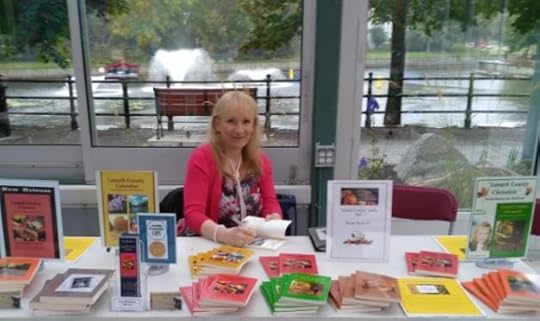
Arlene Stafford-Wilson
Member, Association of Professional Genealogists
Honorary Life Member, Lanark County Genealogical Society
Lanark County Pioneer Families Humanitarian Award 2023
Author of : “Lanark County Christmas”, “Lanark County Comfort”, “Lanark County Collection”, “Lanark County Calling”, “Lanark County Classics”, “Lanark County Connections”, “Lanark County Calendar”, “Lanark County Chronicle”, “Lanark County Kid”, & “Recipes & Recollections”
and new for 2023 – “Lanark County Kitchen: A Maple Legacy from Tree to Table”
November 17, 2023
Revere Hotel
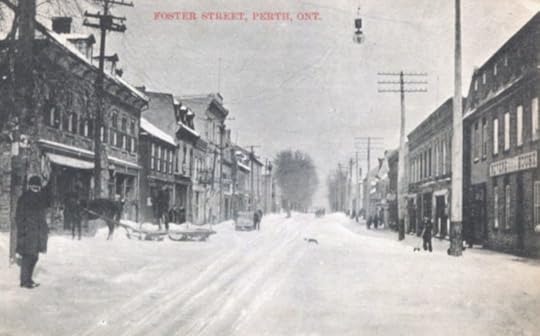
Revere Hotel (Revere House) – at the far right, 80 Foster Street, Perth, Ontario
“The Zoo”
In the heydays of the 1970s, the Revere Hotel was affectionately known as, “The Zoo”. It was the place to go for the best in country music, cold brews, and good times. Like any local bar there were the usual rounds of ‘boy meets girl’, a dash of forbidden love, and even the occasional rowdy exchange, mostly verbal, but sometimes physical. If these old walls could talk, they might share some tales of its long and storied history in the town of Perth, those early days when travelers pulled up at the front in their horse and buggies, the days of its first colourful owner, a Mr. Ferguson from Scotland.
Ferguson Family
Alexander Craigdarroch ‘Black Sandy’ Ferguson was born at Laggan, Perthshire, Scotland, son of Duncan Ferguson (1740-1784) and Helen Stewart (1754-1820).
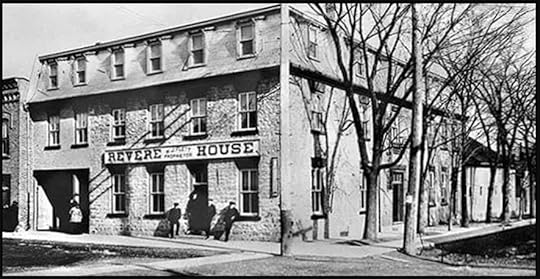
This fine stone building was constructed in the 1820s first as a store, and converted into a hotel in 1835.
In the back of the building there was a a 40 gallon copper still, part of the licensed distillery run by a Mr. John Ferguson. Naturally, the distillery produced Scotch whiskey known locally as ‘Craigdarroch of Perth’ praised for its smooth taste.
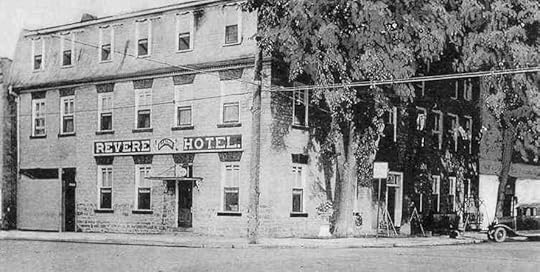
In 1904, a third floor was added to the hotel providing space for an additional 15 rooms.
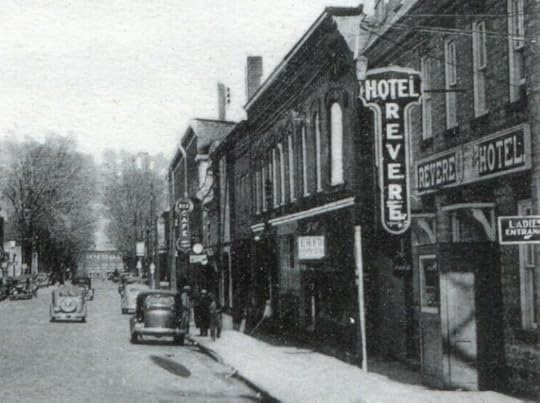
The building remained as a hotel, but changed hands many times; first known as the Black Sandy Ferguson Hotel, later the William Hicks Hotel and eventually the Revere Hotel.
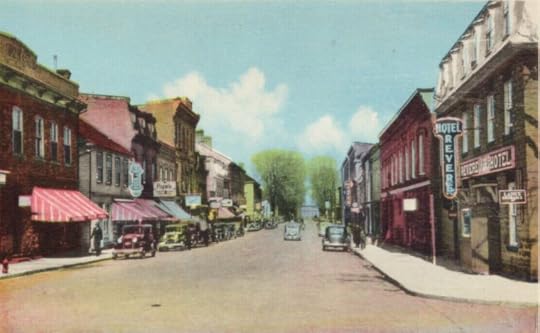
Kehoe Family
In 1917 Peter Kehoe, son of John Kehoe & Catherine Byrne purchased the Revere House from William Flett. Peter had worked for William Flett at the hotel in the early 1900s, first, as a wine clerk, and later as a bartender. Peter also served as a Councilor for the Town of Perth, elected in 1922. He passed away in 1930, but his wife, Mary (Hogan) Kehoe continued to operate the hotel. The horse stables at the back of the hotel were removed in 1935 to provide space to park cars. In 1942, Mary Kehoe sold it to a Mr. Allen from Kemptville.
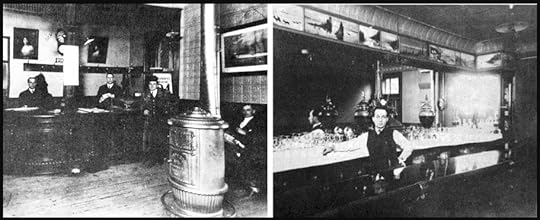
The lobby of the Revere Hotel, with Bartender, Peter Kehoe, who later became the owner. Photo from Perth Remembered.
Lake Family
Francis Albert ‘Frank’ Lake, (1911-2004), son of Henry Lake and Selina Slaney, and his wife, Laura (Martin) Lake (1917-2004) purchased the Revere Hotel, along with a partner, Harold Locatelli. Eventually the Lake family bought out their partner and were sole owners.
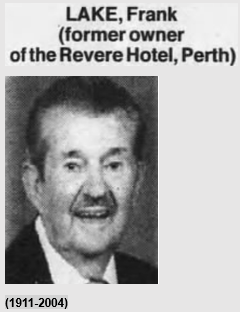
To celebrate the purchase of the hotel, Frank Lake was presented with an unopened bottle of 1916 Scotch Whiskey from McLarens Distillery in Perth. This ‘batch’ was said to be the last production prior to prohibition. This precious artifact is now in the possession of the Geroux family.
1916 Scotch

photo: Larry Geroux
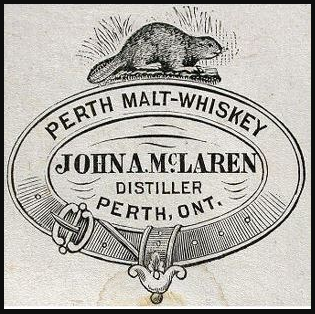
Geroux Family
In 1959 Larry Geroux’s father-in-law, Frank Lake, bought the Revere Hotel, and after leaving the navy, Larry came to Perth to work at the hotel.

One of the highlights in the 1970s, was “Talent Night” at the Revere Hotel, with Suzy Barrie.
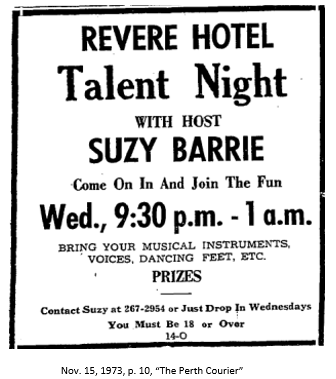
Voyageur Bus Depot
For over two decades, from 1960-1985 the lobby was used as the Voyageur Bus depot. On March 1, 1985, the Voyageur bus-stop was moved to the Video Connections store at Gore St. and North Street.

In 1983, the Red Fox Restaurant and Tavern moved in, and it remains there today.
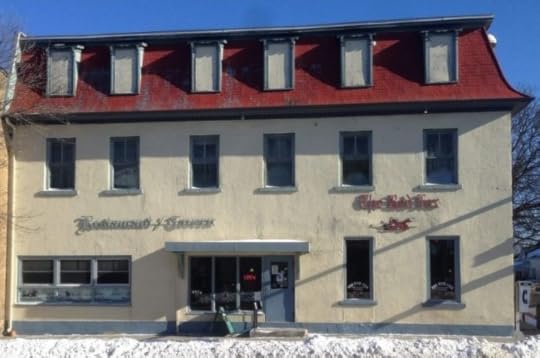
An historic renovation took place in 2021, when the exterior of the building was restored, uncovering the original stonework which was parged over many decades ago.
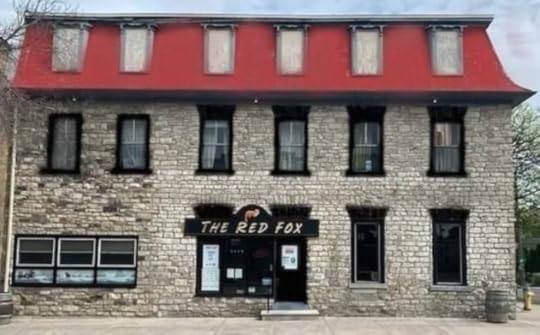
And so, the memories and stories of this very special place continue today. Since the renovation, those old stone walls look very much as they did when the hotel opened for business…..so many years ago.
Oh, if those old walls could talk, I’ll bet they’d have some colourful tales to tell!

Arlene Stafford-Wilson
Honorary Life Member, Lanark County Genealogical Society
Member, Association of Professional Genealogists
Lanark County Pioneer Families Humanitarian Award 2023
Author of : “Lanark County Kitchen”, “Lanark County Christmas”, “Lanark County Comfort”, “Lanark County Collection”, “Lanark County Calling”, “Lanark County Classics”, “Lanark County Connections”, “Lanark County Calendar”, “Lanark County Chronicle”, “Lanark County Kid”, & “Recipes & Recollections”
November 11, 2023
Remembering Mothers in Peace and War
Today, I would like to share a story often told by our late Mother, who served in WWII – Corporal Audry (Rutherford) Stafford, Royal Canadian Air Force. It’s the story of one of the most exciting days of her life – when she performed at the halftime show at Grey Cup 1943.
Mother grew up in Edmonton during the Great Depression. When she turned sixteen and decided to find a part-time job, her father, Charles Rutherford, reminded her, that in those dark days of the ‘dirty thirties’ even men couldn’t find jobs, and that she would likely ‘wear out her shoe-leather‘ long before anyone hired her.
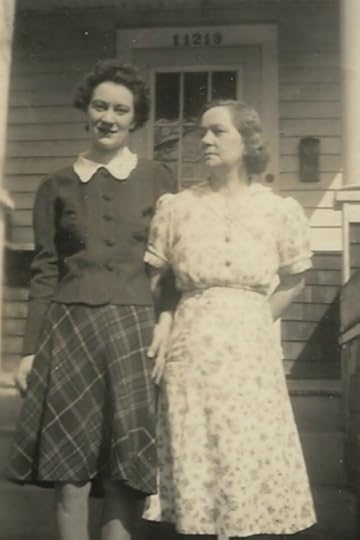
Determined to find work, she took a street-car down Jasper Avenue to the Eaton’s store in downtown Edmonton, walked in, boldly approached one of the clerks, and asked how she might find a position at the store. The clerk answered – ” wear a crisp, white, blouse, and a navy skirt, and come early in the morning, when the store opens, and ask to speak with the hiring manager”. The advice worked, and she got a job as a sales clerk.
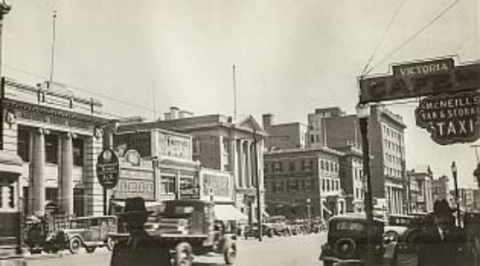
In 1939, the Second World War broke out in Europe. As the next few years passed there were an increasing number of recruiting posters across the country, as more soldiers were required for the war efforts overseas. Her brother Jack went to sign up, but because of his poor eyesight was rejected. Hearing this, she grabbed her hat, headed down to the recruiting office, and signed up that day. “Someone needs to represent the family in the war efforts“, she said.
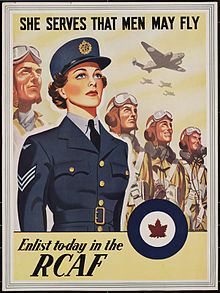
After completing her basic training at the Rockcliffe Air Base in Ottawa, and another round of training at St. Thomas, she was posted to the No.8 Bombing and Gunnery School in Lethbridge, Alberta. It was while she was posted there she met a dashing young soldier by the name of ‘Tib’ Stafford, a charming lad from Drummond Township, Lanark County.
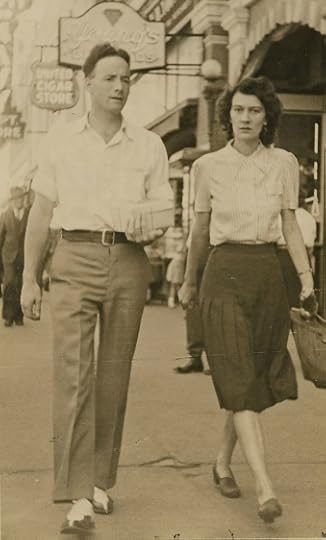
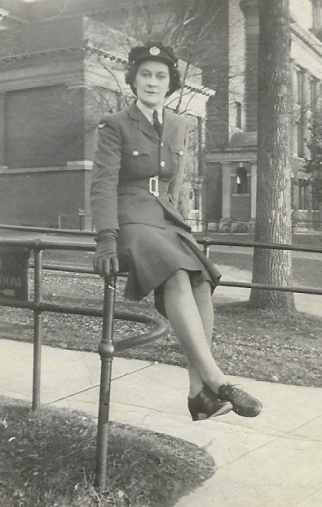
Something very exciting was ‘brewing’ on the air base……
For the first time in Canadian history, a select group of airwomen were sent from their air bases to train as Physical Education Instructors. Twenty-one women in total were selected for this prestigious program, sent for a five-week training program, and were immersed in various active sports, exercises, developing team spirit, studying general health practices, and recreation.
Classes were held at the Margaret Eaton School in Toronto, and while many of the classes were conducted in lecture form, ‘Peter’, the skeleton, was used in the study of anatomy.
Section Officer, Ruth Jernholm, was in charge of the group. Miss Jernholm was a graduate in physical education from the University of Denmark, Copenhagen. She had come to Canada with her sister in 1929 and began her career teaching children in the Winnipeg public school system.
A highlight for these girls in the program was an invitation to perform at the half-time show at the 1943 Grey Cup game, held on November 27th, in Toronto. It was a day not to be forgotten, and a story told and re-told by our late Mother.
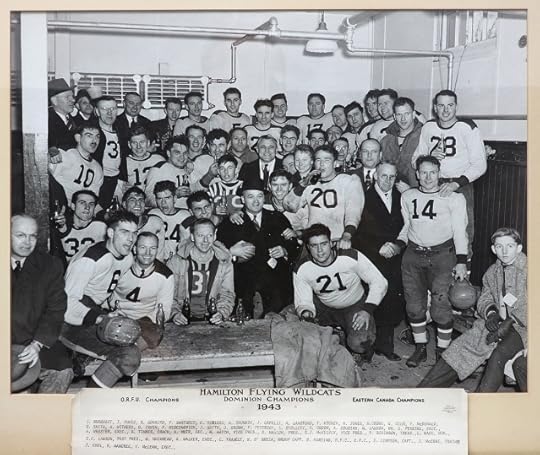

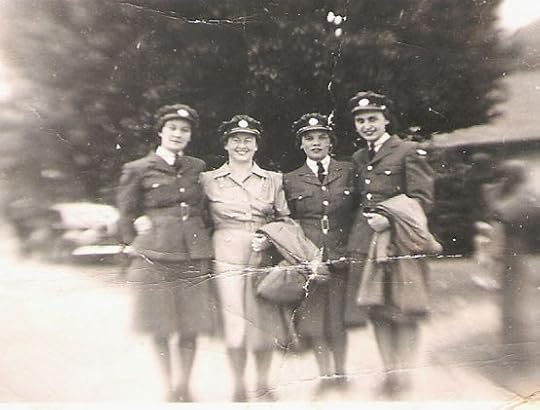
…
Graduates of the first Physical Education Instructor’s CourseRCAF Women’s Division:L.A.W. Phyllis L. Reid, Toronto, Ontario
Cpl. Joy Galloway, Hamilton, Ontario
A.W.1 Naomi Carley, Consecon, Ontario
L.A.W. Margaret Chase, Aylmer, Ontario
A.W.1 Elizabeth Ann Tompkins, Port Credit, Ontario
A.W.2 Mary Crew, Barrie, Ontario
Cpl. Mary Howden, Vancouver, British Columbia
A.W.1 Helen Rocke, Vancouver, British Columbia
Cpl. Ethel M. Boyce,Vancouver, British Columbia
A.W.1 Maureen S. Martin, Vancouver, British Columbia
L.A.W. Violet Peck, Edmonton, Alberta
A.W.1 Audry Rutherford, Edmonton, Alberta
Cpl. Elizabeth Currer, Port Kells, British Columbia
A.W.1 Kathleen Mowbray, Cloverdale, British Columbia
A.W.2 Ethel McCully, Medicine Hat, Alberta
Cpl. Estelle Marcotte, Verdun, Quebec,
L.A.W. Nona Butts, Victoria British Columbia
A.W.1 Anne Turner, Victoria British Columbia
Cpl. Grace E. Nicoll, Mannville, Alberta
A.W.1 Mary Schommer, Leipzig, Saskatchewan,
Cpl. Alice Cuthill, Winnipeg, Manitoba
…….
And so, today, as each of us remembers our own Mothers, let us also take a moment to remember the women who have served, and continue to serve their countries proudly, in times of peace and war.
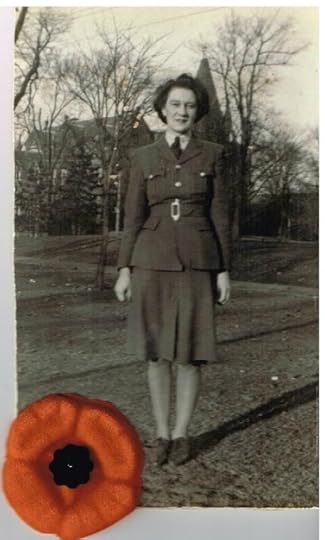
We will remember them.” Lawrence Binyon
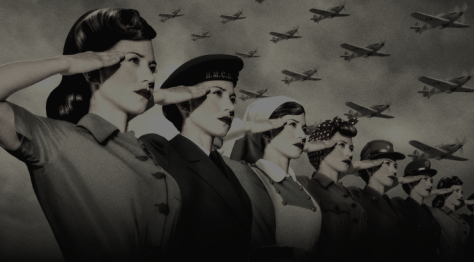
…..

Until we meet again…
…..

Arlene Stafford-Wilson
Member, Association of Professional Genealogists
Honorary Life Member, Lanark County Genealogical Society
Lanark County Pioneer Families Humanitarian Award 2023
Author of : “Lanark County Christmas”, “Lanark County Comfort”, “Lanark County Collection”, “Lanark County Calling”, “Lanark County Classics”, “Lanark County Connections”, “Lanark County Calendar”, “Lanark County Chronicle”, “Lanark County Kid”, & “Recipes & Recollections”
…and “Lanark County Kitchen: A Maple Legacy from Tree to Table”
November 7, 2023
WWII Soldiers from Perth and Area
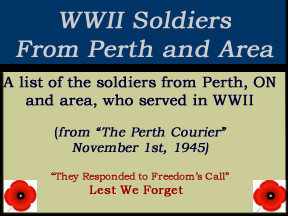


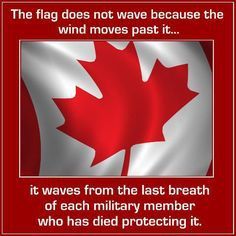


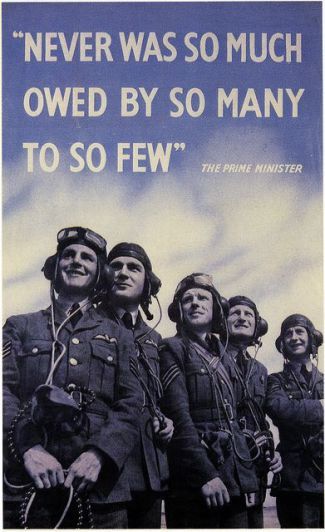
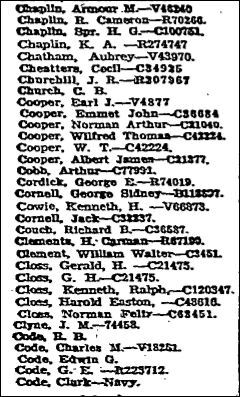

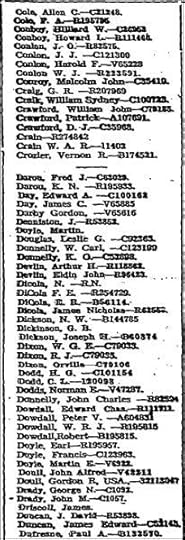
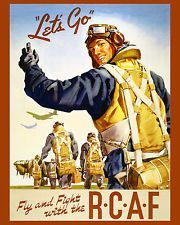

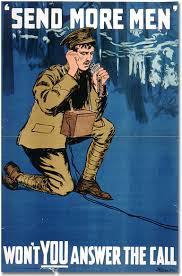
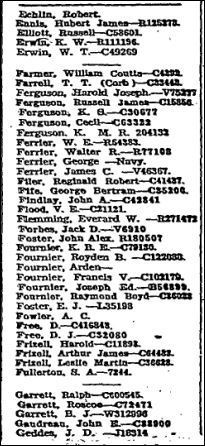
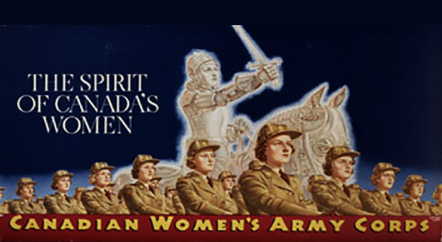

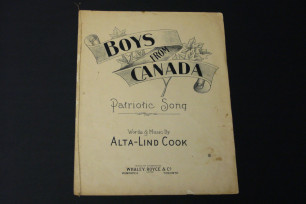
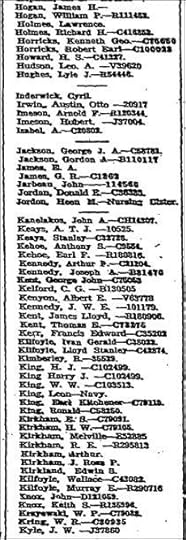
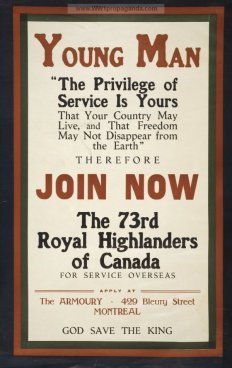
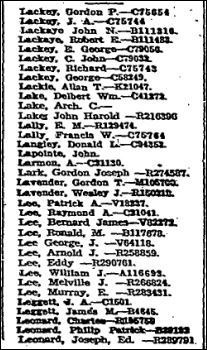
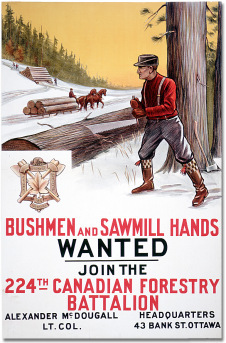
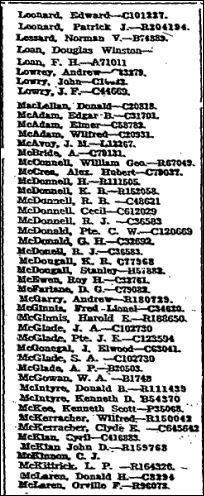
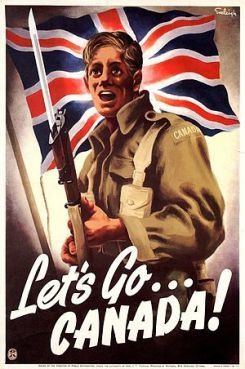
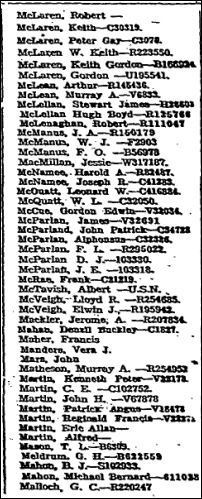


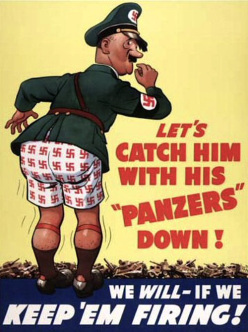
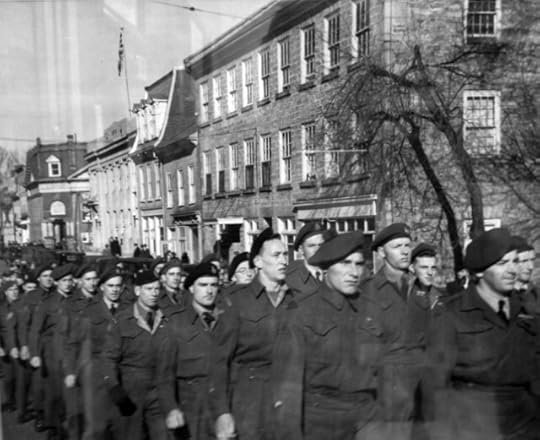
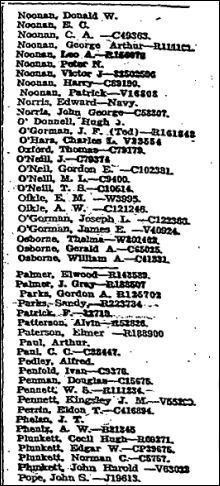

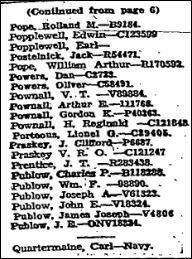

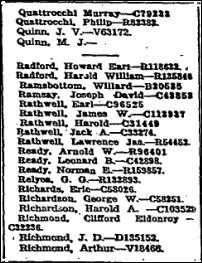

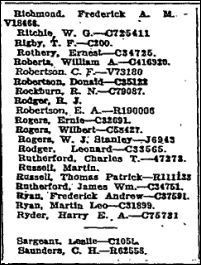
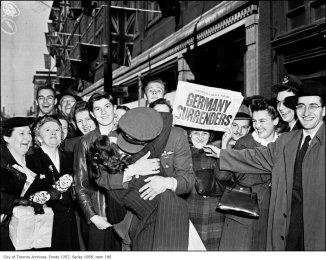
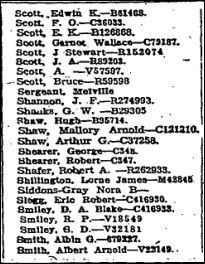
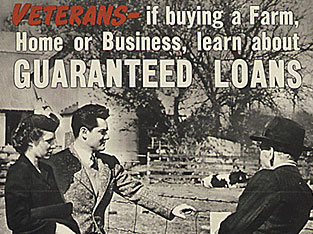
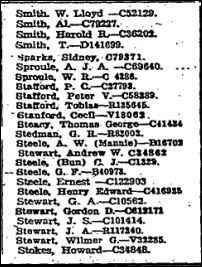
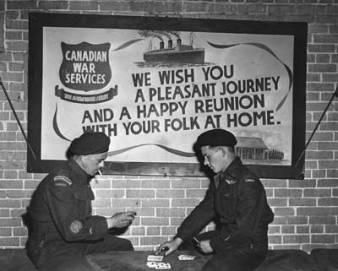
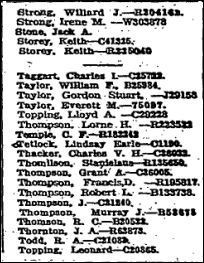
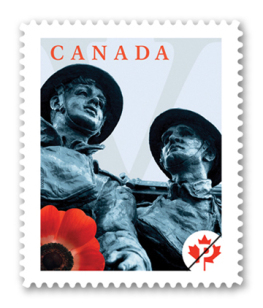
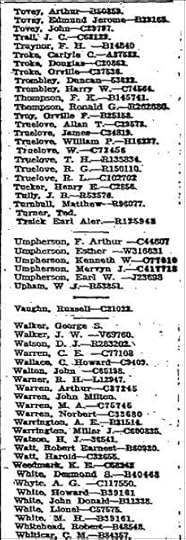

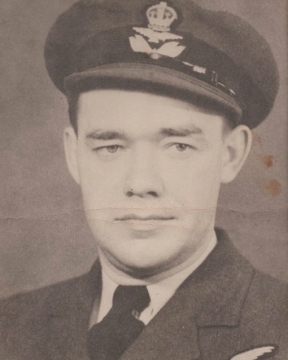
‘Perth Courier’ August 17, 1944
F.O. Robert White Now Presumed to Have Died“Mr. and Mrs. W. J. White, 15 Basin Street, have been advised by the Dept. of Defense, Ottawa, that their son, F.O. Robert White, who was reported missing after air operations over enemy territory on March 31, has now been presumed dead. A crew of seven manned the bomber which did not return and they are all presumed to have died. Shortly before he was reported missing on March 31, Bob was decorated with the D.C.M. at Buckingham Palace by the King.”
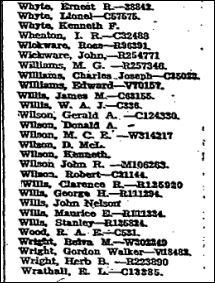
 Lanark and Renfrew Scottish Regiment “D” Company
Perth, Ontario, 1942
Lanark and Renfrew Scottish Regiment “D” Company
Perth, Ontario, 1942

……………………………..
Missing from the Perth Courier’s list, but not forgotten:Burns, George
(submitted by Brenda Burns)Ferguson, Robert
Frizell, Ernest Darou, died 1943, buried overseas.
Goodson, Renfred ‘Bob’ Arthur
(submitted by Corinne Rivington)……………………………………………………………………
Hall, George Cecil
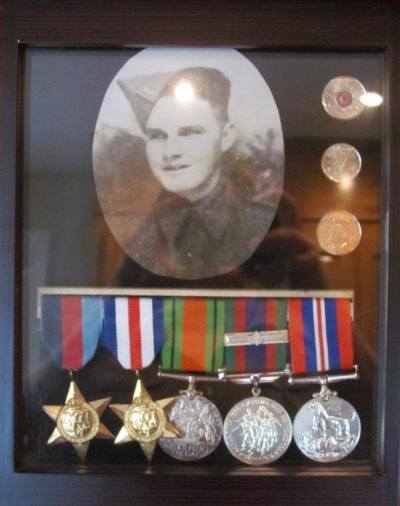
…………………………
Laroque, Kenneth Joseph
Lee, Joseph Patrick
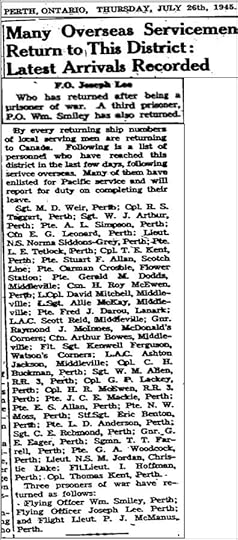
“Ormond’s war record shows that he landed in Sicily, and served throughout Italy, France, Germany, Belgium and Holland. Before he passed I asked him where he was when it was announced the war was over. His face lit up and he said, “I know exactly where I was. Nijmegen Holland.”
“Ormond Paul came home on the ‘Queen Elizabeth’, and was given a package with the Christmas dinner menu, a calendar for 1946, and a photo of the ship packed with soldiers.”
(notes from Roy Paul)
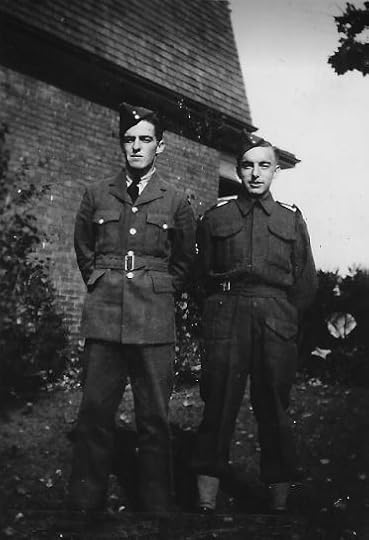
Paul, Ormond M.F. C-28750
Paul, Wilmer,
(from Poland, Ontario, photos submitted by Roy Paul)………………………………………………………
Rattray, Howard John
Rattray, Willard Arnold
Rattray, Clarence William
Rattray, John Elmer
…………………………………………………….
Weir, William Devlin
……………………………………………………..
Wood, Alva
Wood, Eldon ‘Pete’
Wood, Elva
(from Snow Road) – submitted by Trish Fournier……………………………………………………….
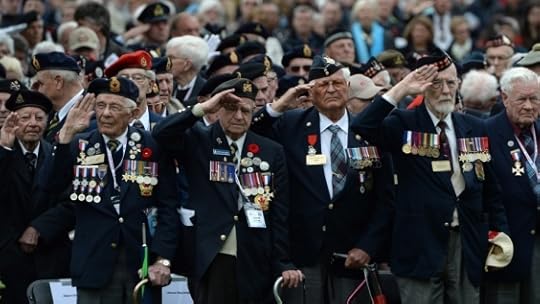
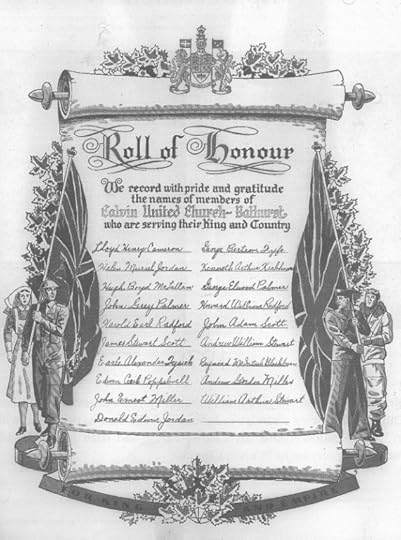
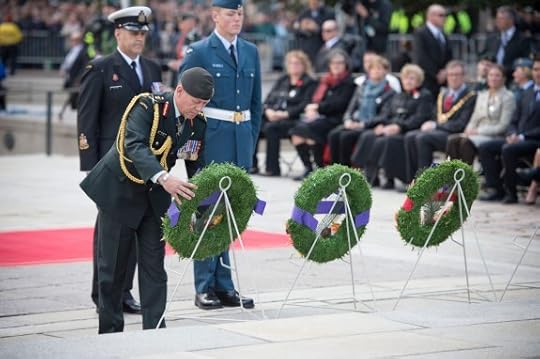


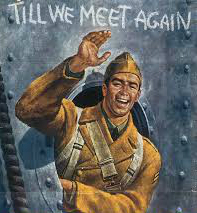
……………….
Local War Heroes: Kyle, McGlade, and DicolaFRIDAY, MAY 14, 2010
Article by ‘St. John’s School’, Perth, Ontario:
St. John’s School Playgroundto Be Dedicated to Local Fallen Heroes and Veterans“The St. John Playground Committee has chosen two local fallen Canadian Forces heroes and one local Veteran to be part of the dedication of their new playground.
The fundraising efforts for the new playground at the school taking place under the auspices of the Let Them Be Kids foundation dictates that any new playgrounds built are dedicated to a Canadian Forces fallen soldier or veteran from the area. After much reading and research by a Grade 6 class at the school, St. John’s has chosen Flying Officer William Kyle, Corporal James Michael McGlade, and veteran Corporal Francis DiCola to immortalize in the dedication of their new play structures.
Flying Officer William Kyle, born and raised in Perth, flew Dakota aircraft as a member of the RCAF 453 Transport Squadron based out of Tulihal, India. His squadron was responsible for moving freight and soldiers to and from various bases throughout the South Pacific. On June 21, 1945, a mission Kyle was on failed to return. The story of the missing aircraft came to prominence more than 50 years later, when the wreckage of the missing plane was discovered in the jungles of northwestern Myanmar (Burma), and Veterans Affairs Canada sought to uncover the wreckage and bring it home. Flying Officer Kyle’s watch, found at the scene, allowed Veterans Affairs to identify the crew and the plane.
Corporal James Michael McGlade, born in Perth and a graduate of St. John Separate School and PDCI High School, served the Canadian Forces as a member of the Royal Hamilton Light Infantry. Corporal McGlade signed up for the military in 1940 and was deployed overseas in 1942. Stationed in Antwerp, Belgium, Corporal McGlade’s regiment was responsible for the liberation, capture and preservation of the vital harbour and dock facilities at Antwerp. He was killed there in 1944 and is buried in Schoonselhof Cemetery in Belgium.
Corporal Francis E. DiCola, also a graduate of St. John Separate School and PDCI, enlisted in the Royal Canadian Air Force as a 17 year old in 1943. As a member of the RCAF Squadron 422 he was stationed at Pembroke Dock in Wales and worked as a radio operator. His job was to dispatch aircraft to various bases throughout Great Britain and the continent. While he was offered the opportunity to act as a guard during the Nuremberg Trials after the war, Corporal DiCola was anxious to return to Canada. He took advantage of the RCAF education packages offered to returning soldiers and took an economics degree at University of Toronto before returning to Perth to run the family business, DiCola Petroleum. Here he raised 7 children with his wife, Rose, and as a businessman and father, has contributed to countless endeavors in our community.
St. John’s is proud to dedicate their new play structures and schoolyard to these local Forces heroes. While the children are playing on the structures building their bodies and friendships, may they also be aware of these brave men who gave of themselves so that we could be free.”
…………………………………….
Be Sure to Visit the Perth Legion Hall of Remembrance:The Hall of Remembrance displays include artifacts donated by local veterans and their families such as war medals, letters, photographs, souvenirs, and display cabinets featuring army and navy memorabilia. The collection focuses on Perth and area’s contributions in World War I, World War II, Korea, Cold War, peacekeeping missions, and Afghanistan.
http://www.hallofremembrance.ca/exhibits/index.html
Hall of Remembrance – Royal Canadian Legion Branch 244, Perth-Upon-Tay – 26 Beckwith Street East Perth, ON K7H 1B5 Tel: 613-267-4400 (Office)………………………………………….
Library and Archives Canada Links for WWII Research:
………………………………………..
Search the Canadian Fallen Heroes Database:
Canadian Fallen Heroes Database
……………………………………………………………………………………………………………………………………………….
This tribute isin memory of all of the soldiers from the Perth areawho fought bravely for our country,so that we might live in peace and freedom.Lest We Forget………………………………………………………………………………………………………………………………………………………
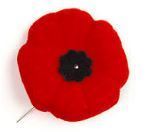
……………………………………….

Arlene Stafford-Wilson
Member, Association of Professional Genealogists
Honorary Life Member, Lanark County Genealogical Society
Lanark County Pioneer Families Humanitarian Award
Author of : “Lanark County Christmas”, “Lanark County Comfort”, “Lanark County Collection”, “Lanark County Calling”, “Lanark County Classics”, “Lanark County Connections”, “Lanark County Calendar”, “Lanark County Chronicle”, “Lanark County Kid”, & “Recipes & Recollections”and, “Lanark County Kitchen: A Maple Legacy from Tree to Table”
November 6, 2023
An Afternoon in Beckwith
It was a sunny November afternoon, with crisp fall air, bright blue skies, and was a pleasant day for a drive to the Beckwith Township Hall, not far from Carleton Place. For those who don’t know, the Township of Beckwith is located on the most easterly side of the County of Lanark and is bounded by the Townships of Montague and Drummond/North Elmsley as well as the Town of Mississippi Mills (formerly Ramsay, Almonte & Pakenham), as well as the City of Ottawa.
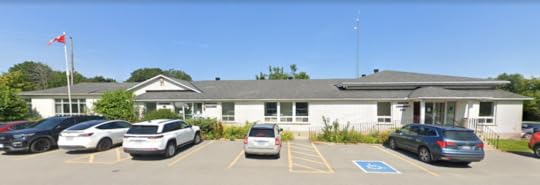
Beckwith Township Hall
We were greeted by a cheerful pumpkin display at the entrance to the hall; a reminder that we are in the heart of an agricultural community whose roots stretch back to the earliest days of the settlement, with a proud history of farming, mills, foundries, and more.
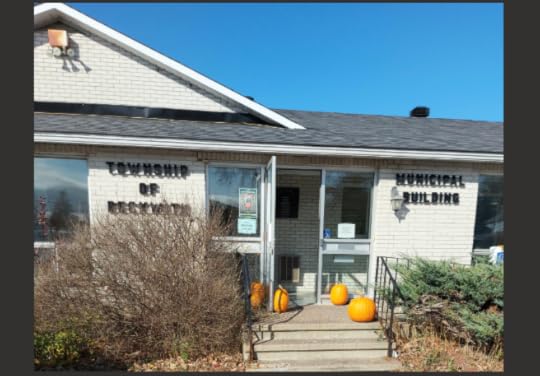
Front entrance, Beckwith Township Hall
Jayne Munro-Ouimet, President of the Lanark County Genealogical Society, greeted the guests, members, and visitors in the packed hall, and opened the day’s events.
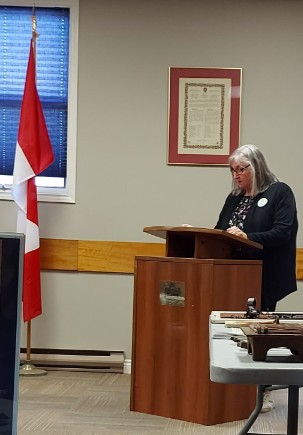
Jayne Munro-Ouimet, President, LCGS
Rose Mary Sarsfield, Corporate Secretary, Lanark County Genealogical Society, assisted Jayne during the busy afternoon, and she led the awards presentations.
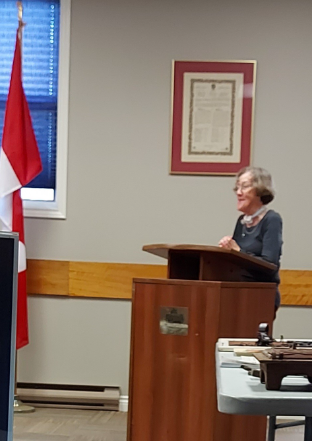
Rose Mary Sarsfield, LCGS Corporate Secretary
LCGS Guest Speaker, Doug Sturgess, brought a fascinating assortment of antique tools, and he spoke on their uses throughout the history of the county. He also displayed several antique farm implement manuals, many which are quite rare these days. Among his collection were tire-changing tools used on Model-T fords, and also many rare old artifacts used by the pioneers of Lanark County.
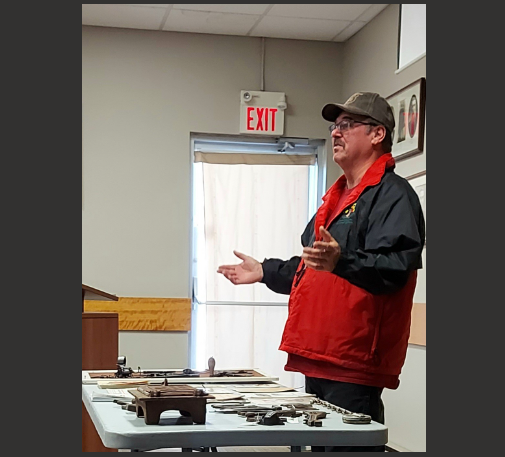
Doug Sturgess
I was also a guest speaker at the event, and presented an overview of my latest book, “Lanark County Kitchen: A Maple Legacy from Tree to Table”. I spoke briefly on the 12 maple syrup-producing families in the book, their arrival to Lanark County, and some fun facts about each one.
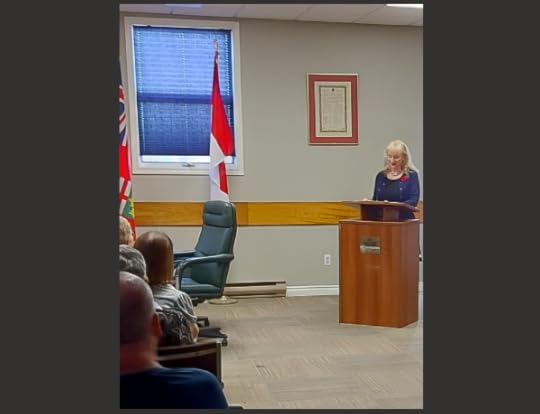
Arlene Stafford-Wilson

Jayne Munro-Ouimet provided some background on the design and creation of the beautiful Lanark County Genealogical Society’s quilt, which was brought to the front of the room for all to examine. Some of the themes of the quilt include a series of proud symbols representing the county, such as maple syrup, Lilacs, Lady-Slipper Orchids, the 5-Span Pakenham Bridge, and more.
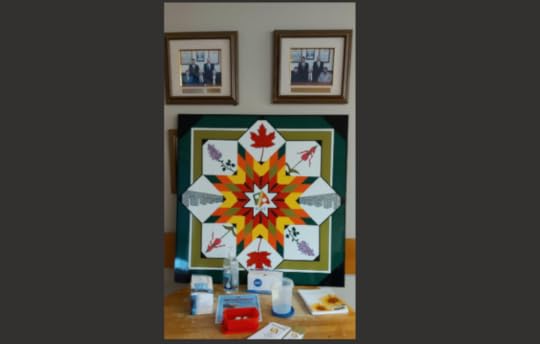
The Lanark County Genealogical Society Quilt
President, Jayne Munro-Ouimet, explained the history and chosen themes for this very special quilt, assisted by Past President, Janet Dowdall.
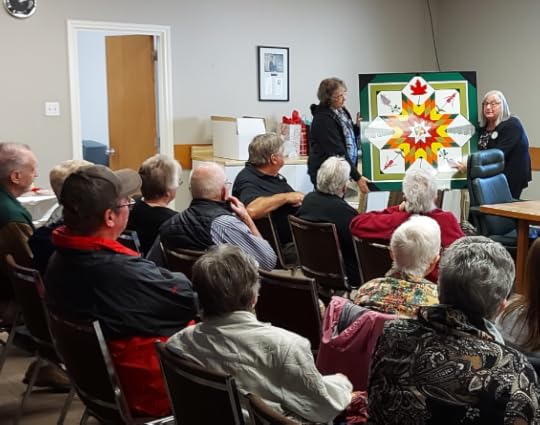
The next segment of the afternoon included a presentation of some antique portraits including one of Mrs. George Chamney, member of the Chamney family of Lanark County.
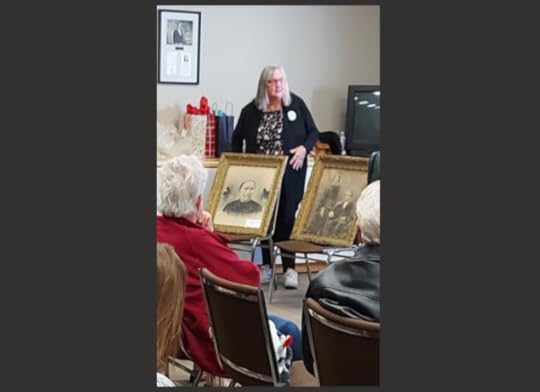
Jayne presented the portrait to John Chamney, great-grandson of Mrs. George Chamney.
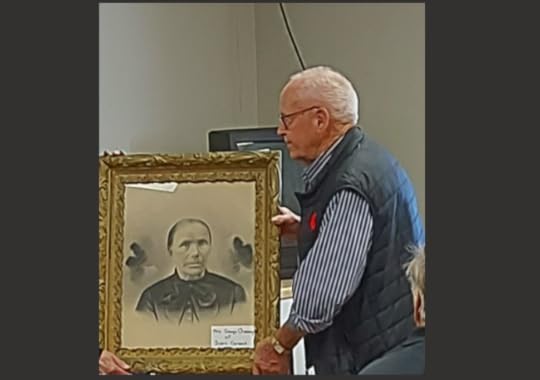
Portrait of Mrs. George Chamney, with her great-grandson, John Chamney
The afternoon’s event progressed with the presentation of awards. The first award, to Elizabeth ‘Betty’ Kelford, was “A Longstanding Community Service Award” – for 25 years of membership in the Lanark County Genealogical Society.
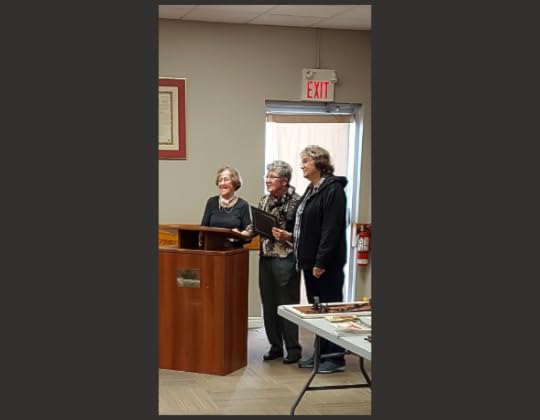
Left to right: Rose Mary Sarsfield, Betty Kelford, Janet Dowdall
The next recipient was Edith Beaulieu, with her 25-year Membership Certificate:

L to Rt: Rose Mary Sarsfield, Janet Dowdall, Edith Beaulieu
Chris McPhail (who was absent) also received the “Long Standing Community Service Award, for 25 plus years of dedication to preserving the history of families of Lanark County.”
Vivian Young was presented with a “Dedicated Volunteer Award”, for her dedication to preserving the history of families of Lanark County:
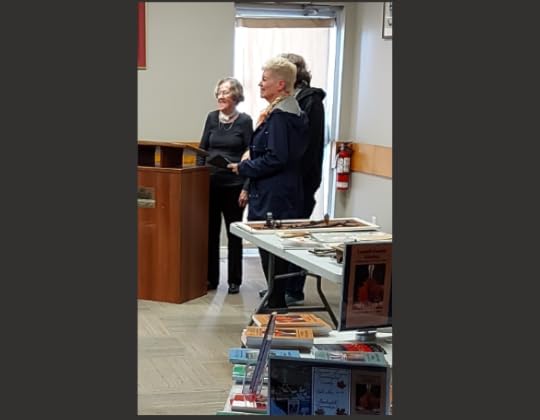
Left to right: Rose Mary Sarsfield, Vivian Young, Janet Dowdall
Ron Lyon also received the “Dedicated Volunteer Award”
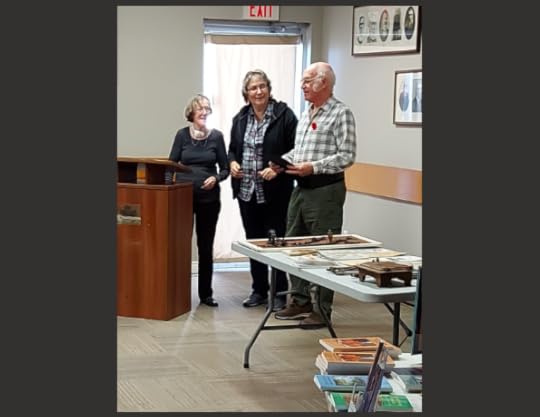
L to Rt: Rose Mary Sarsfield, Janet Dowdall, Ron Lyon
Brenda Krauter, (who was absent) also received the “Dedicated Volunteer Award for dedication to preserving the history of families of Lanark County”.
Lanark County Pioneer Humanitarian Award
Drawing close to the end of the ceremony, I was surprised and delighted to be called up to the front of the hall to receive the “Lanark County Pioneer Families Humanitarian Award”, (for leadership and collaborative interest in preserving the history of Lanark County for future generations and all the dedicated contributions to fostering unity in genealogy, the preservation of records and in helping make family history a vital force in the community).
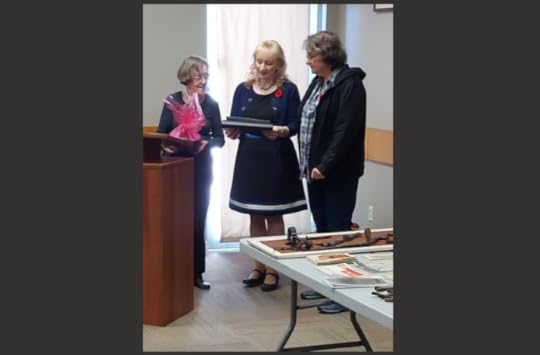
L to Rt.: Rose Mary Sarsfield, Arlene Stafford-Wilson, Janet Dowdall
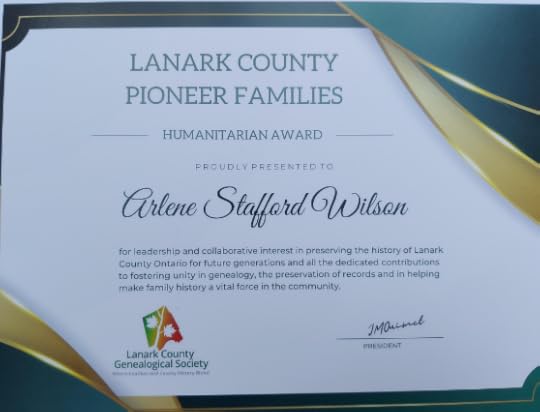
Along with this special honour, I was presented with a beautiful gift basket containing a delightful assortment of tasty treats, all made in Lanark County.
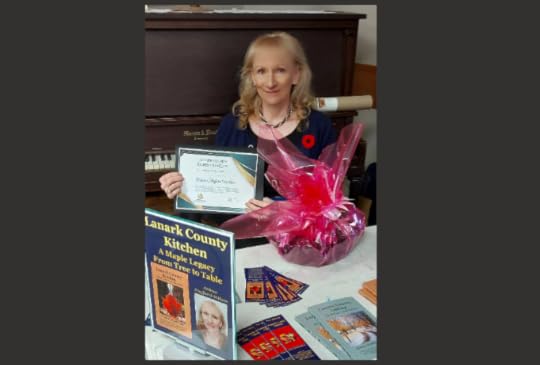
The treats in the gift basket: Balderson medium cheese, a set of four assorted Vodkow liqueurs from the Dairy Distillery in Almonte, three delicious goodies from one of our legacy maple producing families, the Fulton’s – amber Maple Syrup, Maple peach jam, and creamy Maple butter. There was also some dark chocolate-covered Turkish delights from the Perth Chocolate Works, and a Maple chocolate bar from Hummingbird Chocolate, Almonte. What an amazing assortment showcasing our Lanark County businesses! I can’t wait to try them all!
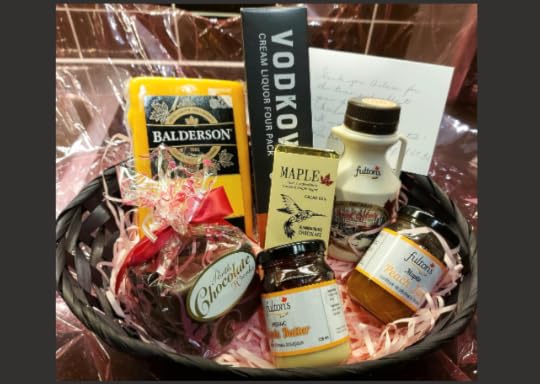
At the close of the meeting, there was a table with refreshments – sweets, cookies, fruit and cheese, assorted fruit juices and water for the members and the many guests and visitors who dropped by to share in this special day.
It was a busy afternoon at the book table, and was a great opportunity to meet some new friends, and chat with some old friends as well. I signed many copies of the new book, “Lanark County Kitchen: A Maple Legacy from Tree to Table”, and shared some fascinating conversations with readers about the county’s ‘legacy’ maple producing families.
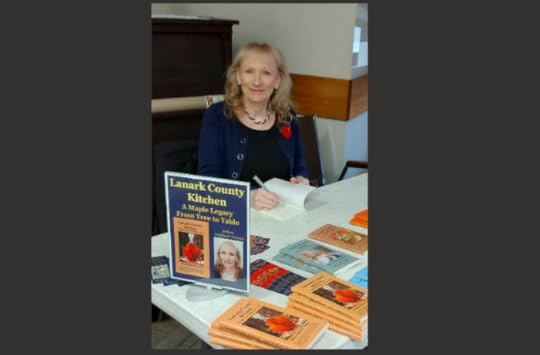
Like all good things, our afternoon in Beckwith Township had come to an end, and we had to say, Good-bye”.
Many thanks to the Lanark County Genealogical Society for organizing such a special event. Thanks to all of the members who came, the special guests who were there, and for the visitors new to the genealogy society.
Thank-you for the warm welcome and for the esteemed honour of receiving the Lanark County Pioneer Families Humanitarian Award. I am very appreciative to receive this recognition and to join the ranks of those distinguished genealogists who have won this very special award in previous years.
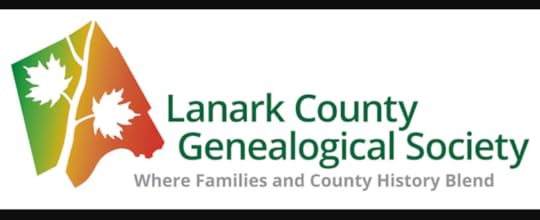
The Lanark County Genealogical Society’s mission is to foster the study of genealogy and promote the preservation, and conservation of a wide variety of resources. This helps offer a bridge between the past and the future of Lanark County.
For membership inquiries please contact the website:
To contact the Lanark County Genealogical Society:
Membership in LCGS
PO Box 26003
Almonte RPO, Almonte Mall,
Almonte, ON, K0A 4A0
Tel. 613-257-9482

Arlene Stafford-Wilson
Honorary Life Member, Lanark County Genealogical Society
Member, Association of Professional Genealogists
Author of : “Lanark County Kitchen”, “Lanark County Christmas”, “Lanark County Comfort”, “Lanark County Collection”, “Lanark County Calling”, “Lanark County Classics”, “Lanark County Connections”, “Lanark County Calendar”, “Lanark County Chronicle”, “Lanark County Kid”, & “Recipes & Recollections”
November 3, 2023
War Brides
On November 12, 1986, “The Perth Courier” published an article by Michael Taylor, titled, “War Brides: The Unsung Heroines of War.” The article featured three local war brides, and their stories: Anne O’Neil, Audrey Montgomery, and Peggy Young.


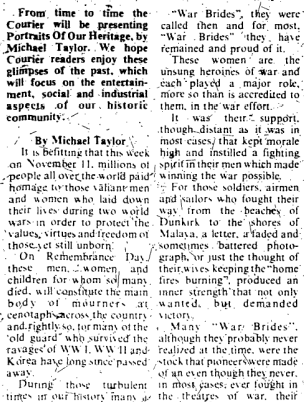

“When following their husbands who were usually shipped home before them, these women were transported to a land known only to them through school books and the ramblings of homesick young men.”
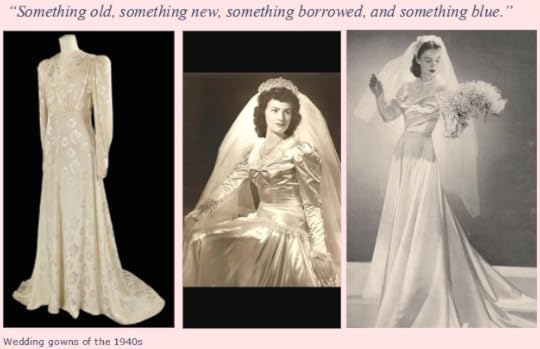
Anne O’Neil (1927-1994)
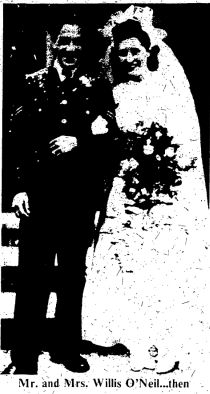
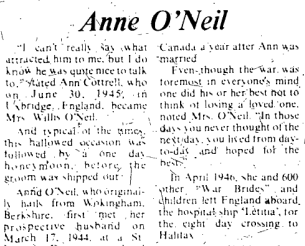
Anne Cottrell (1927-1994) hailed from Wokingham, Berkshire, England, and first met Willis O’Neil on March 17, 1944 at a St. Patrick’s Day party, at a local pub in Uxbridge.
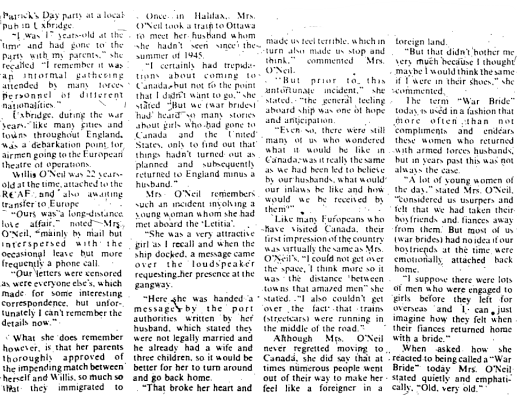
Willis Orval O’Neil (1921- 2002) served with the R.C.A.F. #415 Squadron and was a proud father to: Sharon, Terry, Debbie, Keith, Colleen, Stephen, Erin, Jimmy, Kevin, Michael, Randy, and brother to Melvin, Jackie, Darlene, Audrey, Elroy, Donnie, Doug and Hilda.
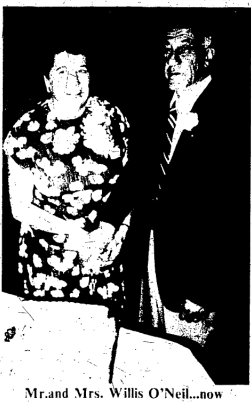
Audrey Montgomery (1926-2016)
“Those Canadians are a scruffy lot, I remember saying to a friend in 1942, shortly after a contingent of soldiers arrived in my home town of Crawley Down, Sussex, England.”
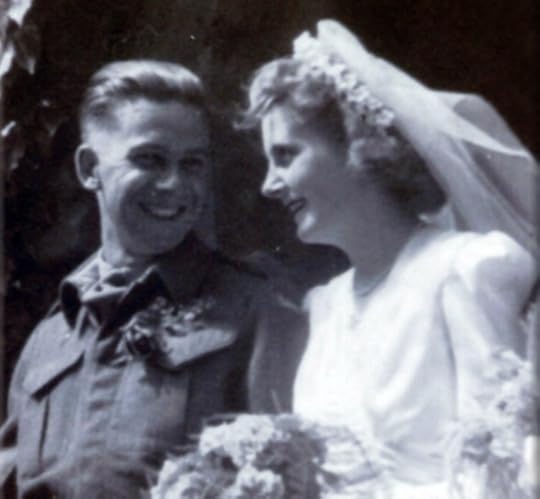
Audrey Elsie (Riley) Montgomery was sister to Dulcie (Riley) Preston and Barry, Jim, Kenneth and Tony Riley, and she and her husband, Alex, had two daughters: Heather and Dawn.
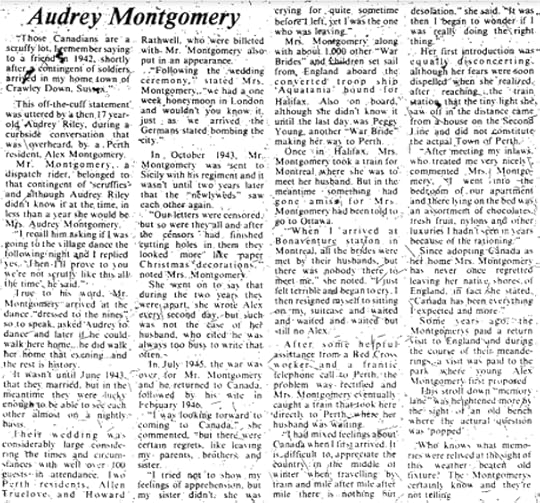
“Alex Montgomery was sent to Sicily in October 1943 with his regiment and it wasn’t until two years later that the newlyweds saw each other again.”
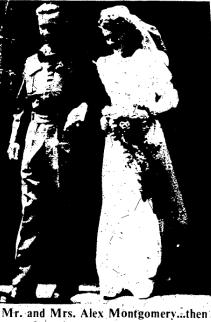
Mr. and Mrs. Alex Montgomery…..(1986)
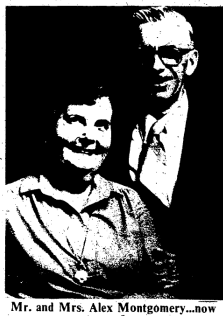
Peggy Young
Peggy (Bartholomew) Young (1924-2012)
Peggy was the daughter of Samuel and Florence Bartholomew of Surrey, England
“It was 1943 at the West Croydon Arena near London, that I first laid eyes on him.”
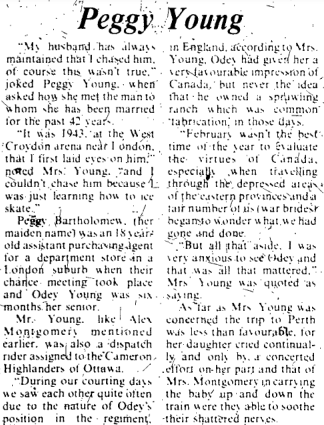
Odey Young (1924-2002) – Odey was the son of Ernest and Gladys Young, and a sibling to Bob, Iris, Lois, Donald, Maynard, George, Jimmie, Gladwyn, and Annie
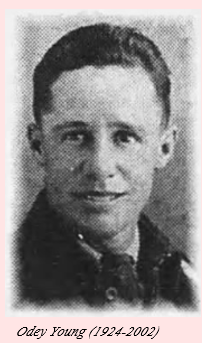

(Peggy Young passed away at age 87. She was predeceased by her husband, Odey Young. She and Odey had three children: Jennifer, Pamela and Deborah)
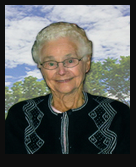
“Since the end of WWII thousands of War Brides left their native homeland and followed their husbands to North America where they eventually assimilated themselves into a new and different way of life.
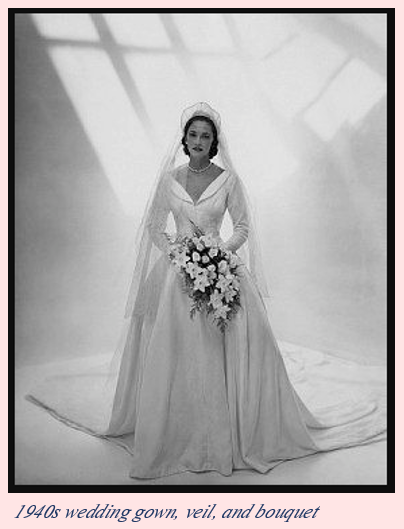
Few, if any, ever regretted leaving behind family and friends and if they did so it was for only a short time because it was natural that they would make new friends and adopt Canada as their homeland.”
I hope you enjoyed this special tribute to some of our forgotten heroines of the war who left their homes and settled in a new land, with their handsome young soldiers – the War Brides of WWII.
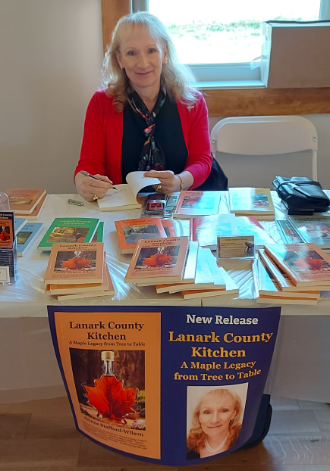
Arlene Stafford-Wilson
Honorary Life Member, Lanark County Genealogical Society
Member, Association of Professional Genealogists
Author of : “Lanark County Kitchen”, “Lanark County Christmas”, “Lanark County Comfort”, “Lanark County Collection”, “Lanark County Calling”, “Lanark County Classics”, “Lanark County Connections”, “Lanark County Calendar”, “Lanark County Chronicle”, “Lanark County Kid”, & “Recipes & Recollections”
November 2, 2023
Finding Our WWI Ancestors
Short days ago we lived,
felt dawn, saw sunset glow,
loved and were loved,
and now we lie in Flanders Fields.” — John McCrae
Over 600,000 men and women enlisted in the Canadian Expeditionary Force (CEF) during the First World War, (1914-1918) as soldiers, nurses and chaplains. The CEF database is an index to those service files, which are held by Library and Archives Canada.
This free online searchable database includes over 600,000 men and women who participated in WWI (1914-1918) including soldiers as well as nurses and clergy:
WWI Canadian Forces Personnel Records
These service files contain the name, address, service number, name of the next of kin, their physical description , skin colour, eye colour and scars or identifiable markings, and the unit number and location where they signed up for service.
On this site you can find links to the soldier’s file, which contain medical and pay records, and encompass a more detailed personal history of the soldier, and includes the specific units where they served, after going overseas. The soldier’s full service records are not available online, however, they may be ordered for a fee from Library and Archives Canada.
Also available are links to the Canadian Virtual War Memorial if the soldier died while in service.
War Diaries – This is a link to the diaries of the unit, not to personal diaries, but of the records of day to day life in a particular unit. This will give you great insight to how your ancestor lived in times of war in their group as they trekked across Europe and participated in various battles – some successful and some not.
Using the resources and links mentioned in this article, I was able to search and locate cousin Harry Stafford’s enlistment papers, his detailed medical files, including x-ray images and comments from attending physicians, his pay statements, physical description, and name and address of his next of kin.
I was also able to find out about the specific battle where he was wounded and subsequent hospitals in Europe where he received treatment. The records also state his date and condition at discharge, and pay records of any amount owing.
Harry’s story begins with the 130th Battalion, Lanark and Renfrew Scottish Regiment which was the ‘130th also known as the ‘overseas’ Battalion, based in Perth, Ontario.
They began recruiting in the fall of 1915, in Lanark and Renfrew Counties.
Harry’s StoryNine-year old Harry stood by the shore, and watched in horror as his eldest brother Wilfred struggled to the surface again and again, until he finally slipped out of sight into the deep blue waters of the Mississippi River near Lanark.
Harry and his brothers often played near the water, although none of them could swim. The four brothers stood on the shore that fateful day in July, and skipped stones on the surface of the water, just as they had so many times before.
Wilfred, two days shy of his thirteenth birthday, was the eldest of the four. He took great pride in showing his younger brothers how to pick the longest flattest stones. He coached them on how to hold the stones on their flat side, and throw them parallel to the water, so they would skip farther along the waves. Dick, at age ten, was beginning to get the hang of it. Harry and his twin brother Frank had turned nine two months before and were doing their best to keep up with the older boys.
Harry, the stronger and more athletic of the twins was trying to help his brother Frank as he struggled with the task. Frank had kyphosis which meant that he had a severe curvature of the spine. People in those days referred to Frank as a ‘hunchback’, but he was still able to do most things; although it might take him a little longer.
One of the boys had thrown his prized pocket-knife into the water by mistake, and Wilfred had gone into the water to retrieve it, slipped on a rock and fell into a deep hole, unable to swim, and drowned. The younger boys had raced back into Lanark to get help, but it was too late. By the time they had met up with the first grown-up it was already after five. Mr. Baker, the local tailor in Lanark hurried back to the spot, and pulled Wilfred’s lifeless body from the river.
Mr. Baker laid the body gently on the shore, and headed back to the Stafford home to deliver the news. Harry’s mother Mary (Murphy) Stafford was pregnant with her next child Carmel at that time, and both she and Harry’s father Peter were overcome with grief.
This would be Harry’s first, though not his last encounter with death at a young age. Two years later in the spring, his mother once again gave birth to twins – this time a boy and a girl – Rose Marie and Martin Wilfred, named for his late brother. The twins were born in the spring, and Harry’s parents were delighted to welcome the new babies into their growing family. Sadly, tragedy struck once again, and Harry’s new little brother Martin Wilfred, the weaker of the two passed away quietly, just seven weeks after his birth.
A few short years after the second tragic event in Harry’s family, war was declared in Europe. Canada was still under British rule at the time and as such would be expected to join in the war efforts overseas.
Within the next couple of years tales of the excitement and adventure on the front lines travelled back to Perth, and acts of heroism and valour were recounted in the local papers. Life on the farm, and the daily chores seemed mundane, compared with the glorified life of a soldier fighting for freedom.
The 130th Battalion, Lanark and Renfrew Scottish Regiment which was the ‘130th “Overseas” Battalion, CEF’ Based in Perth, Ontario, began recruiting in the fall of 1915 in Lanark and Renfrew Counties. When a recruitment officer arrived in the village of Lanark one winter, young Harry, just sixteen at the time lied about his age and signed up on the spot.
The Canadian Expeditionary Forces, as they were known, specifically recruited men between the ages of 18 and 45, so Harry claimed that he was born the same year as his brother Dick and was actually eighteen years old. They took him at his word, and Harry became an enlisted man on January 9th, 1916.
Harry, along with some local lads, was sent for basic training in Valcartier, Quebec and returned home for a brief visit before going overseas.
August 4 1916 – ‘The Perth Courier’“Corporals Ronald Scott, William Strang and Jack Scott (McDonald’s Corners) and Privates Lance Affleck, Ralph Craig, John Kingston, Harry Stafford, Henry Barrie (Watson’s Corners), and Joseph Bennett (Fallbrook) of the 130th Batt., Valcartier, are home on a week’s furlough – their farewell visit before going overseas.” (Harry was 17 by then)
The 130th Battalion left the Halifax harbour and sailed for Britain on 23 September 1916. After two weeks at sea, arriving in Liverpool, England on October 6th, Harry and the other members of the unit were absorbed by the ’12th Reserve Battalion, CEF. Their prime function was to provide reinforcements for the Canadian Corps that were already fighting in the field.
After fighting bravely in both England and France, Harry found himself participating in one of the most significant campaigns in WWI. Known as the Third Battle of Ypres (or Passchendaele) this battle was remembered both for its tremendous loss of life and casualties and because of the horrendous conditions of the battlefield.
The siege of Passchendaele went on for over three months from July through November 1917. More than 4,000 Canadians died and over 12,000 were wounded. The battlefield consisted of flat, swampy lowlands, and when heavy rainfall pounded the fields that autumn, the ground became a sea of mud. The men had to struggle through the thick mud with very little cover, while German soldiers tore them to pieces with their machine guns.
By November the Canadians were finally beginning to win the battle and began to push the Germans back from their stronghold. It was on the 6th day of November 1917 that 18 year old Harry was wounded in the leg by German gunfire at Passchendaele.
Harry was dragged out of the line of fire, received basic care from one of the medics to stop the bleeding and was sent to a hospital in England. He was admitted two days later on November 8th.
Word of Harry’s injuries was sent to his parents, back on the farm, in Lanark:” Mr. and Mrs. Peter Stafford received a telegraph from the Director of Records, Ottawa, on Friday, informing them that their son, Pte. Harry Stafford, 787104, had been wounded by gunshot in thigh and leg on Nov 6th, and admitted to No. 6 Field Ambulance Depot. Harry went overseas with the 130th Batt. in September, 1916, was transferred to another battalion for service in France, and has been through some severe engagements since crossing the channel. His many friends hope that Harry’s wounds are not serious.”
—-21 November, 1917, “The Lanark Era”The medical care during WWI was a very complex set of institutions, which cared for wounded soldiers from the battlefield, as soon after injury as possible. The soldier was evacuated as quickly as possible for treatment, and provided care.
The Field Ambulance was a mobile unit equipped with horse-drawn ambulances. They brought soldiers from the battlefields to an Advanced Dressing Station located at the rear of the siege out of harm’s way.
After Harry was shot, the first day he was sent to the #6 Field Ambulance Nov 6 1917, and after a month’s time was transferred to the Pavilion General Hospital Brighton Nov 23 1917, for three weeks.
Harry’s condition was not improving, and he suffered infection after infection. He was transferred to the Military Convalescent Hospital at Woodcote Park, Epsom, England on Dec 22, 1917 and he remained there receiving treatment for four and a half months.
In March 1918 he was transferred to Bramshott Military Hospital, where he was treated for one month, with still no sign of improvement.
It was during this time that Harry received word from his parents at home that his brother Carl had enlisted in a month earlier, and like Harry had lied about his age in order to join the service.
On July 8th, 1918 Harry was admitted to the Granville Canadian Special Hospital in Buxton, Derbyshire, England.
In November of 1918 WW1 finally ended. Losses of human life by Canadians and the allies were in the thousands.
After six months of unsuccessful treatment at the Granville Hospital in England Harry was finally discharged on December 3rd, 1918.
His condition continued to deteriorate, and on December 23 1918 Harry embarked for Canada sailing on the S.S. Tunisian.
Due to his medical condition, Harry was discharged from the military at Ottawa, on February 5, 1919.
Jan 10 1919 Perth Courier:“Pte. Harry Stafford, son of Mr. and Mrs. Peter Stafford, Lanark, returned home Monday from overseas. He went overseas with the 130th Batt. In November 1917 he was wounded in the leg and latterly has been receiving hospital treatment in England.”
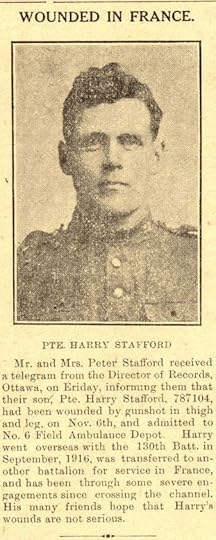
Harry’s condition never improved, and once again he was admitted to St. Luke’s Hospital in Ottawa on February 4th, 1920. He developed a cold two days after being admitted, and his operation was postponed until Feb 9th. Pneumonia developed 12 hours following operation, and Harry died two days later. There was speculation at the time that he may have contracted the flu while in the hospital, and that it turned to pneumonia in his already weakened state.
The influenza pandemic of 1917-1920 was a global disaster, and was actually responsible for killing more people than WWI. It has been said that it was the most devastating flu epidemic in recorded world history.
Because of the close quarters and huge troop movements during the war it is possible that these two factors hastened the pandemic and likely increased transmission of the virus. Many soldiers’ immune systems were weakened by lack of proper nutrition, the stresses of combat and chemical warfare, increasing their susceptibility to any illness.
Feb 20 1920 –“Died: In St. Luke’s Hospital, Ottawa on Thursday February 12th, Harry Alphonsus Stafford, son of Mr. and Mrs. Peter Stafford of Lanark, aged 20 years and 9 months.”Because he died at St. Luke’s Hospital in Ottawa, Harry’s death was registered in the County of Carleton, Division of Ottawa. His official cause of death was listed as pneumonia.
After a quick search on Ancestry.com, I found Harry’s death certificate:
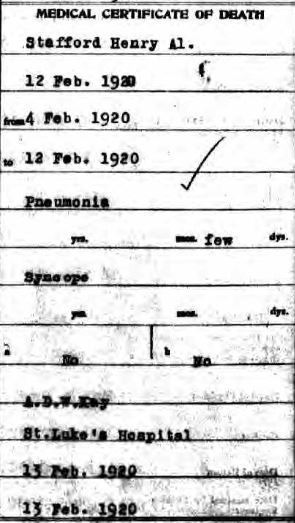
Harry is buried at the Sacred Heart Cemetery, Lanark, Ontario
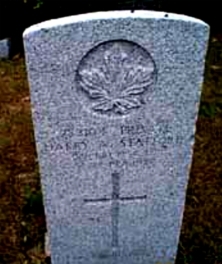
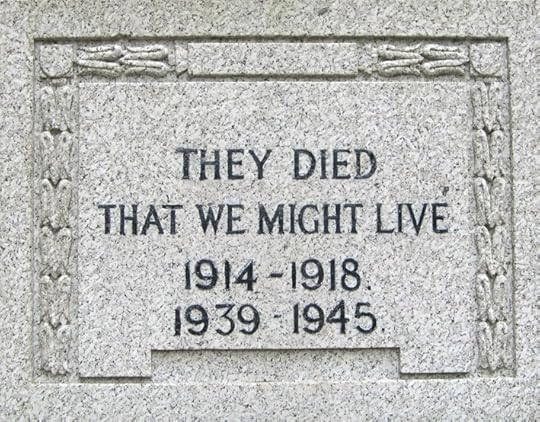
……………………
War Memorial, Ottawa, Canada

There are several resources listed below to help with your search.
……………………………………….
(the above is an excerpt from a book on the life and military service of Pte. Harry Stafford. The hard-cover book is available for research purposes at the Lanark Museum, 80 George Street, Lanark Ontario lanarkanddistrictmuseum@gmail.com, and at Archives Lanark, 1920 Concession 7 Road, Drummond Centre, Perth, Ontario adm.archiveslanark@bell.net)

 Lest We Forget
Lest We Forget………………………..
Link to: Canadian Soldiers of WWI
Link to Commonwealth War Graves
Link to Names in Book of Remembrance
…………………………
Arlene Stafford-Wilson
Member, Association of Professional GenealogistsHonorary Life Member, Lanark County Genealogical SocietyAuthor of : “Lanark County Christmas”, “Lanark County Comfort”, “Lanark County Collection”, “Lanark County Calling”, “Lanark County Classics”, “Lanark County Connections”, “Lanark County Calendar”, “Lanark County Chronicle”, “Lanark County Kid”, & “Recipes & Recollections” and new for 2023 – “Lanark County Kitchen: A Maple Legacy from Tree to Table”available at local stores or email: lanarkcountybooks@gmail.com
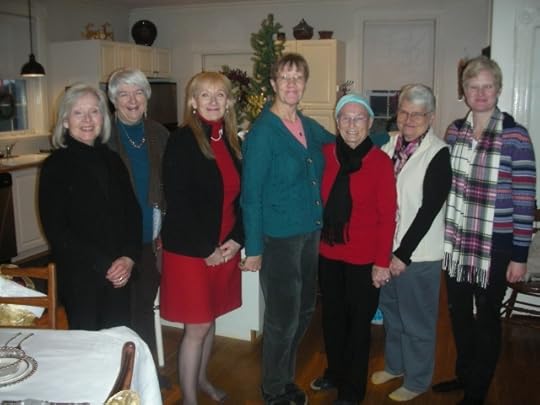
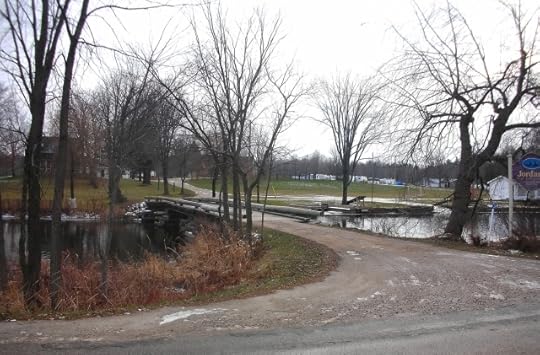
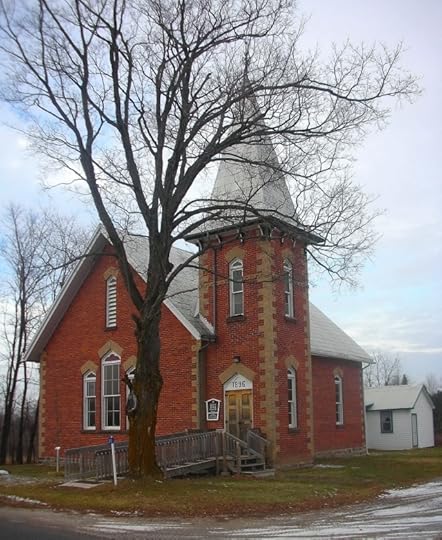
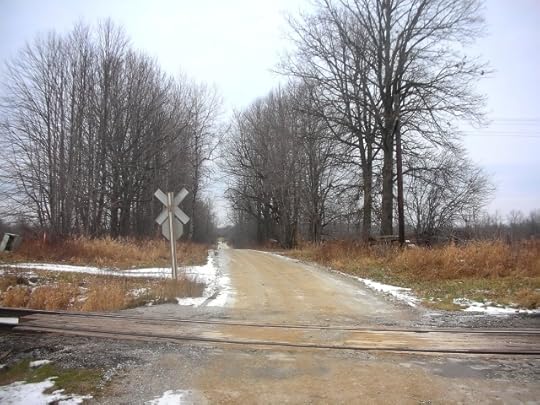
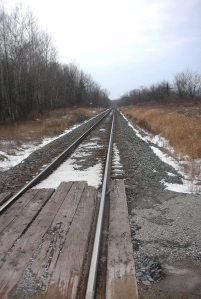
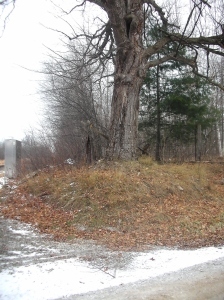
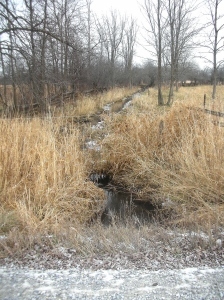
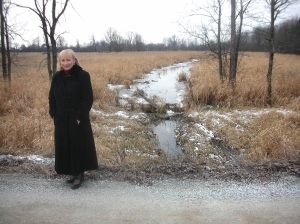
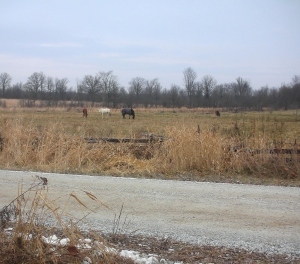
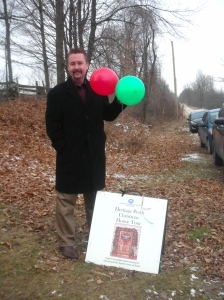
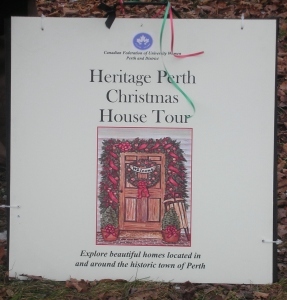 *
*